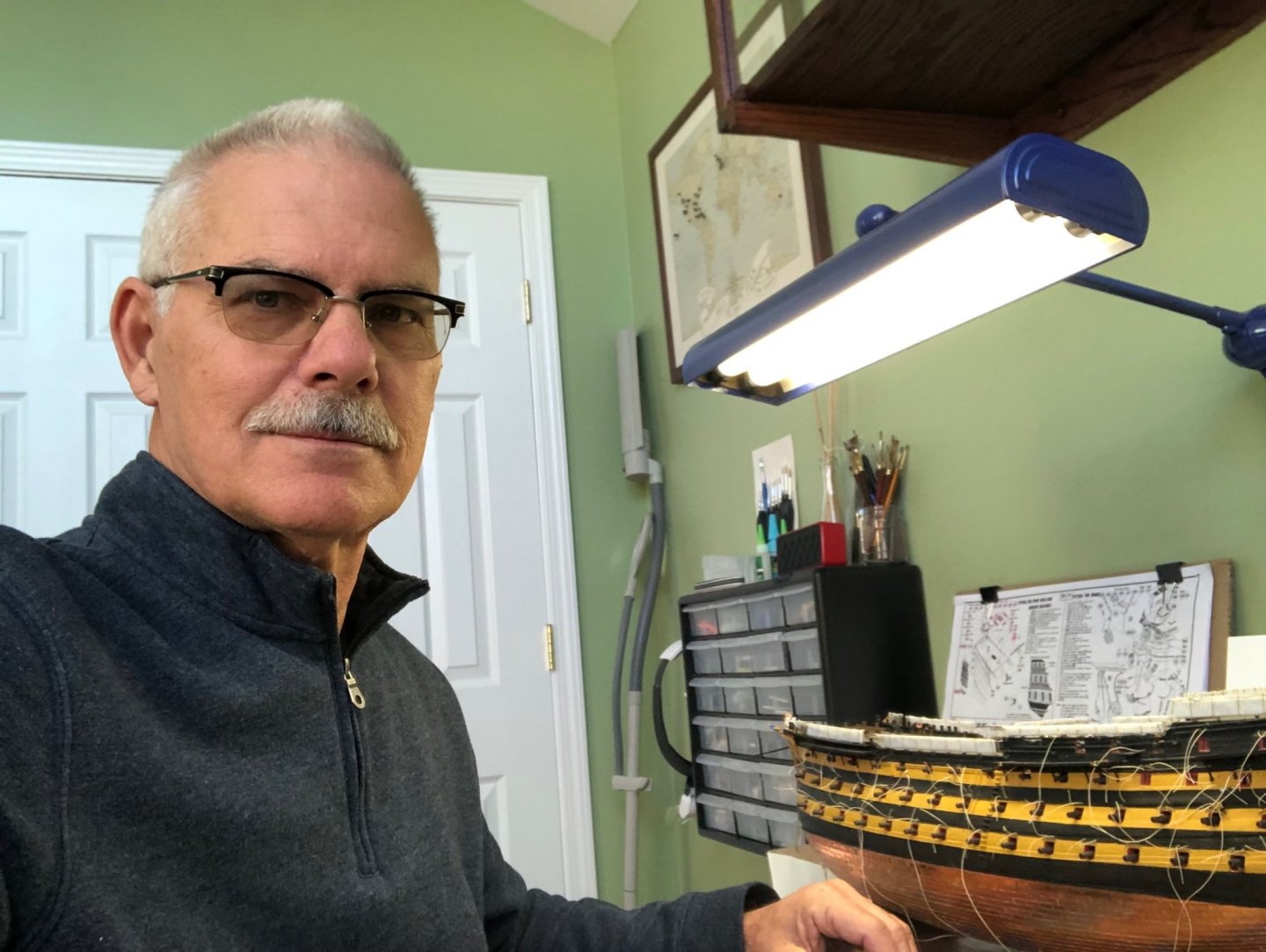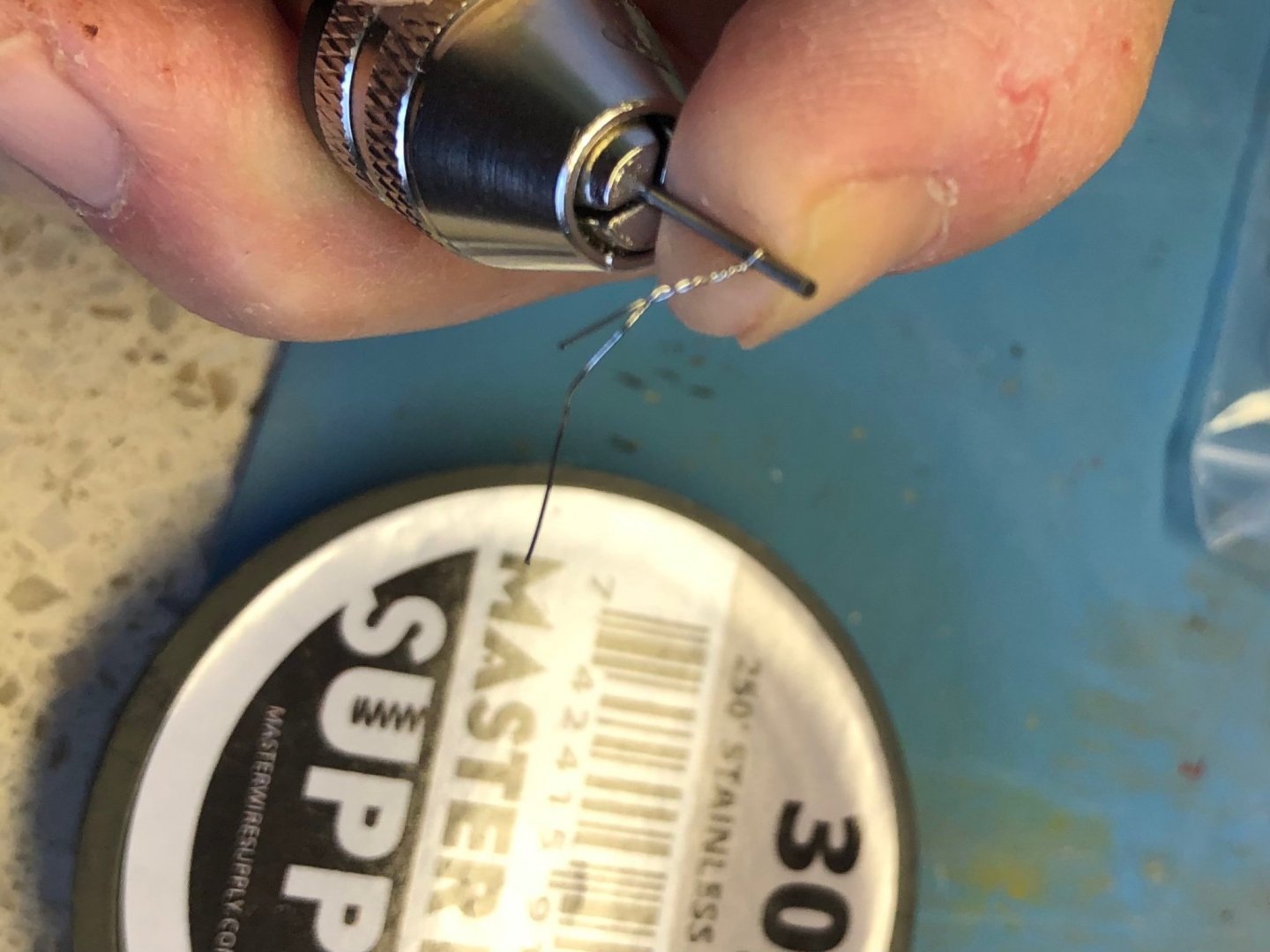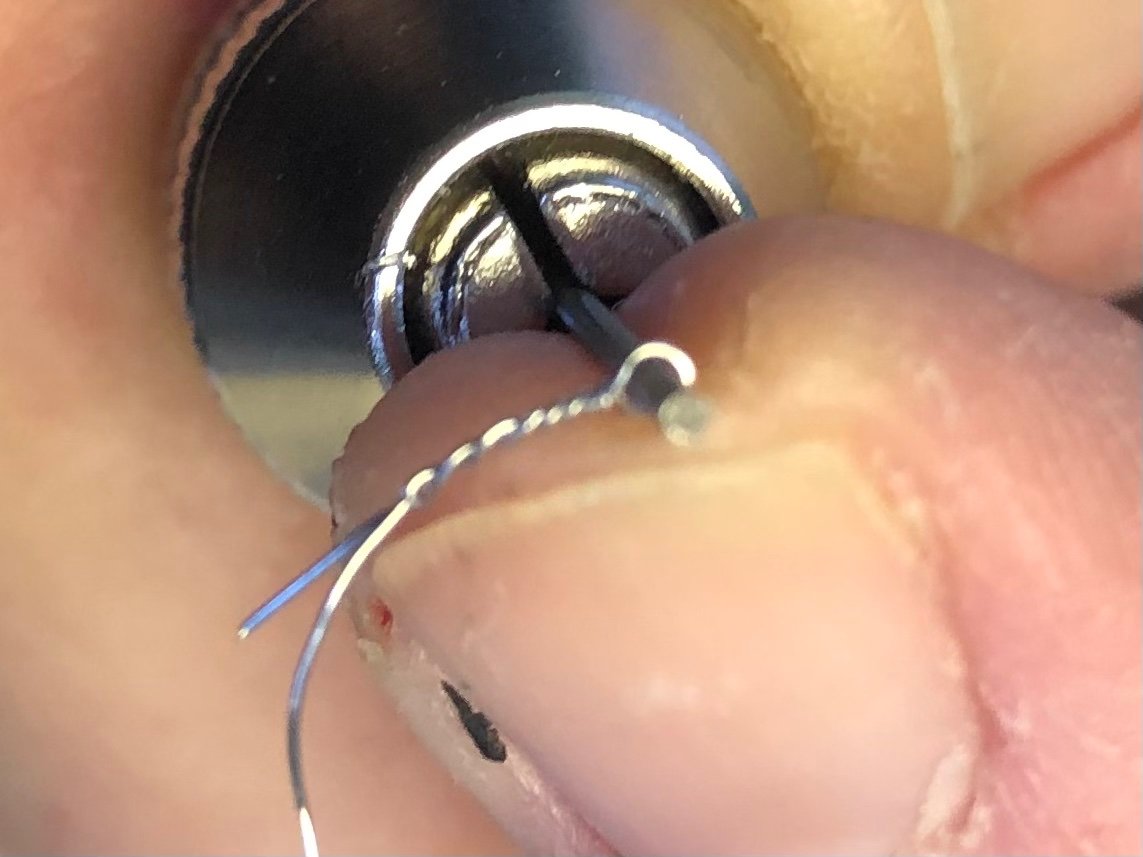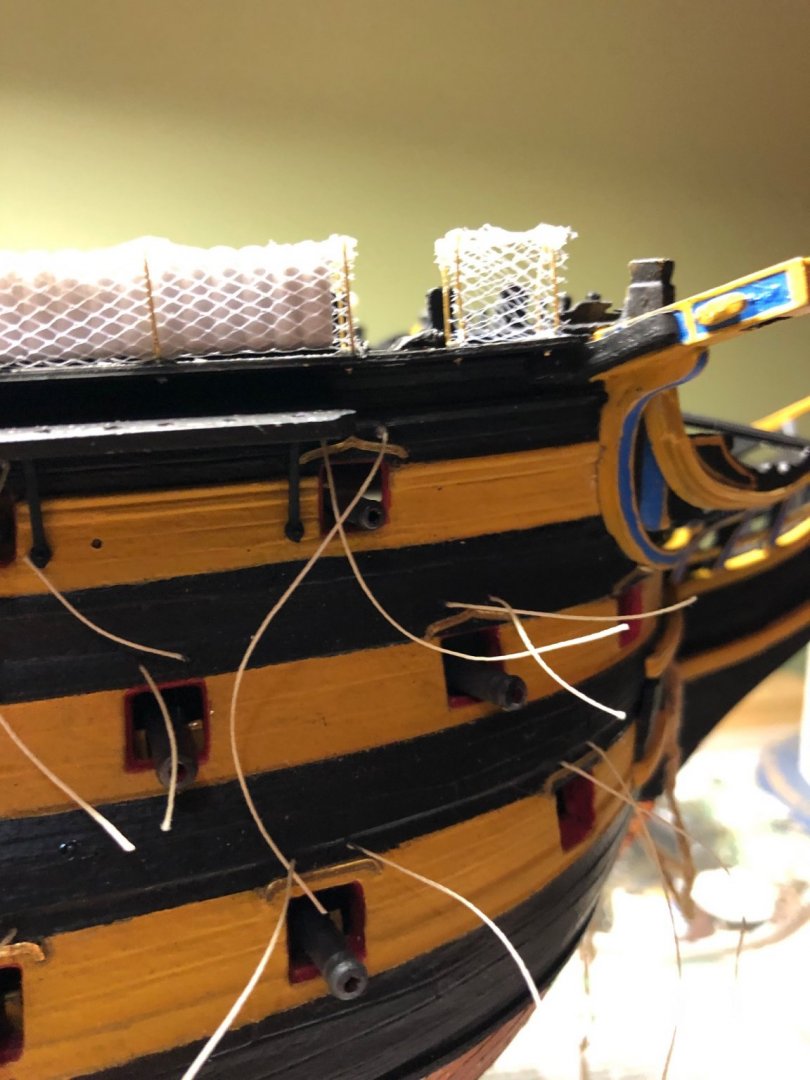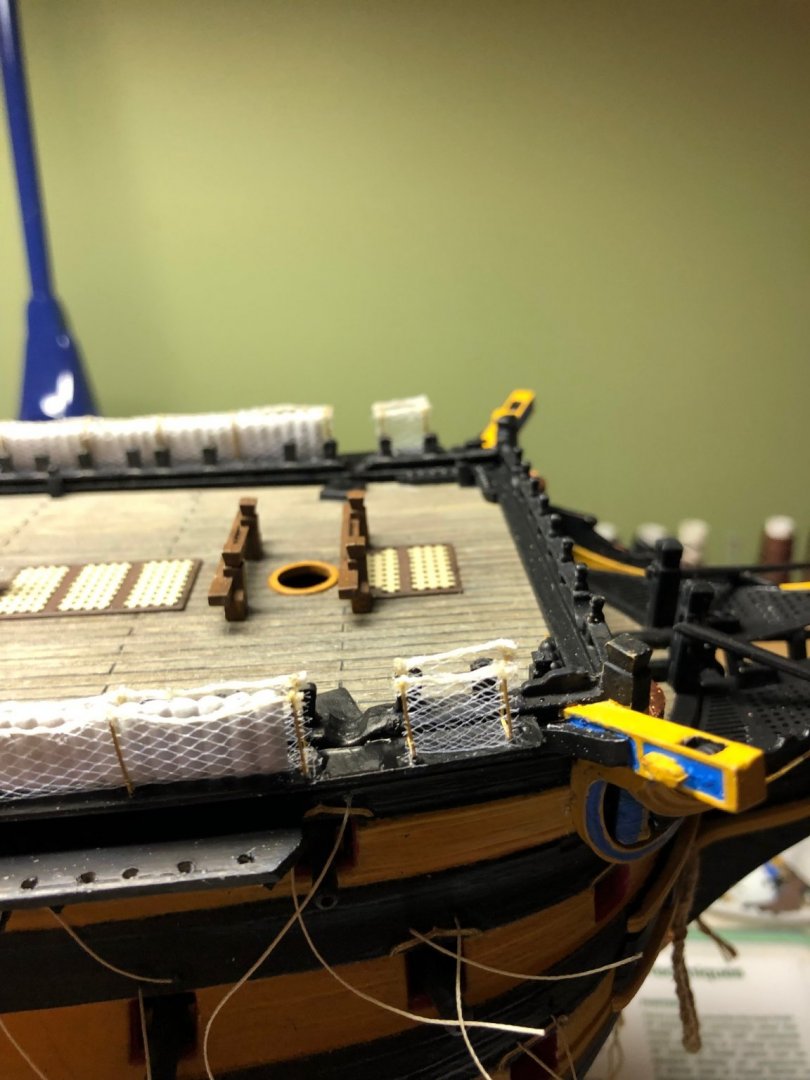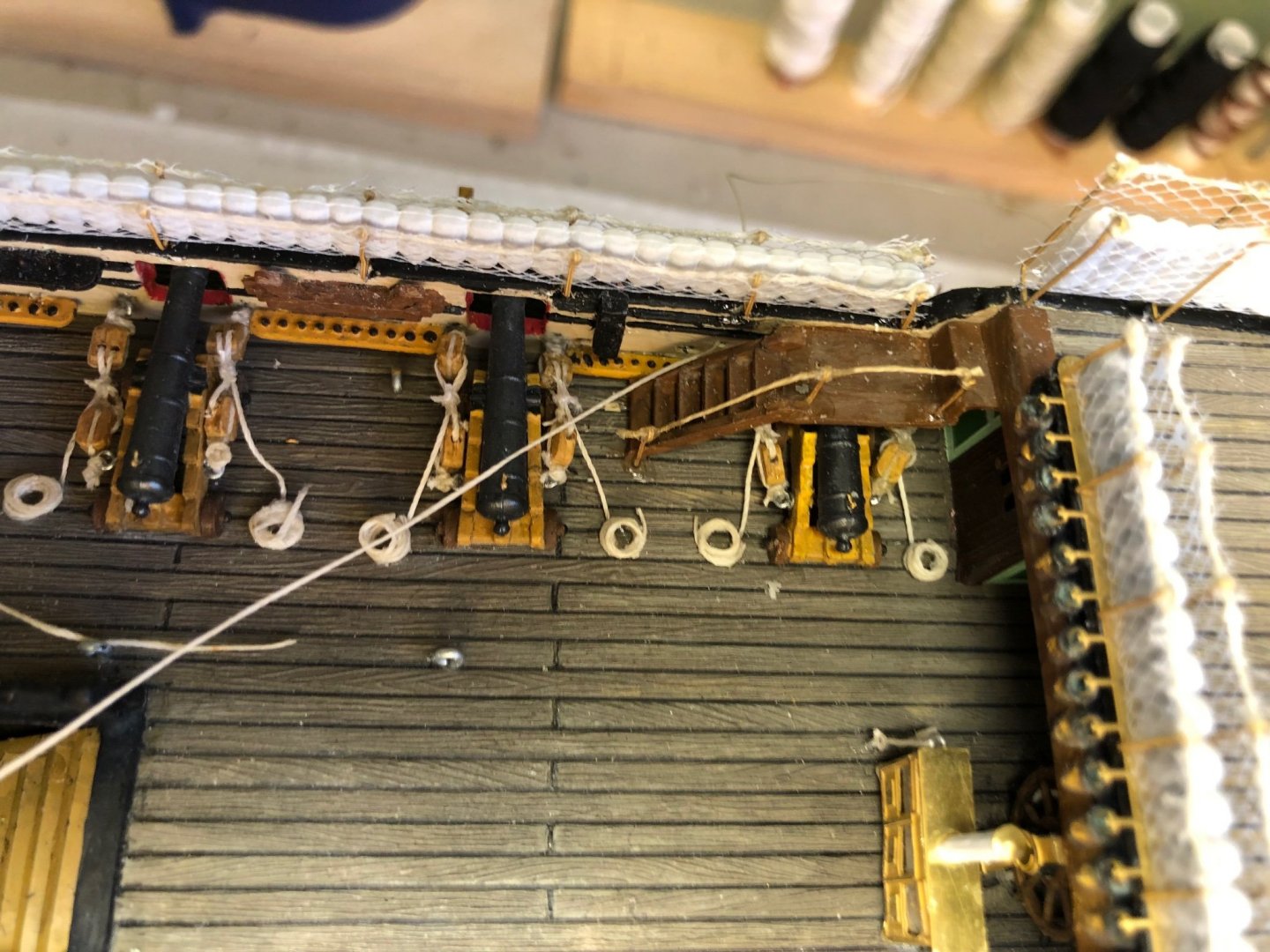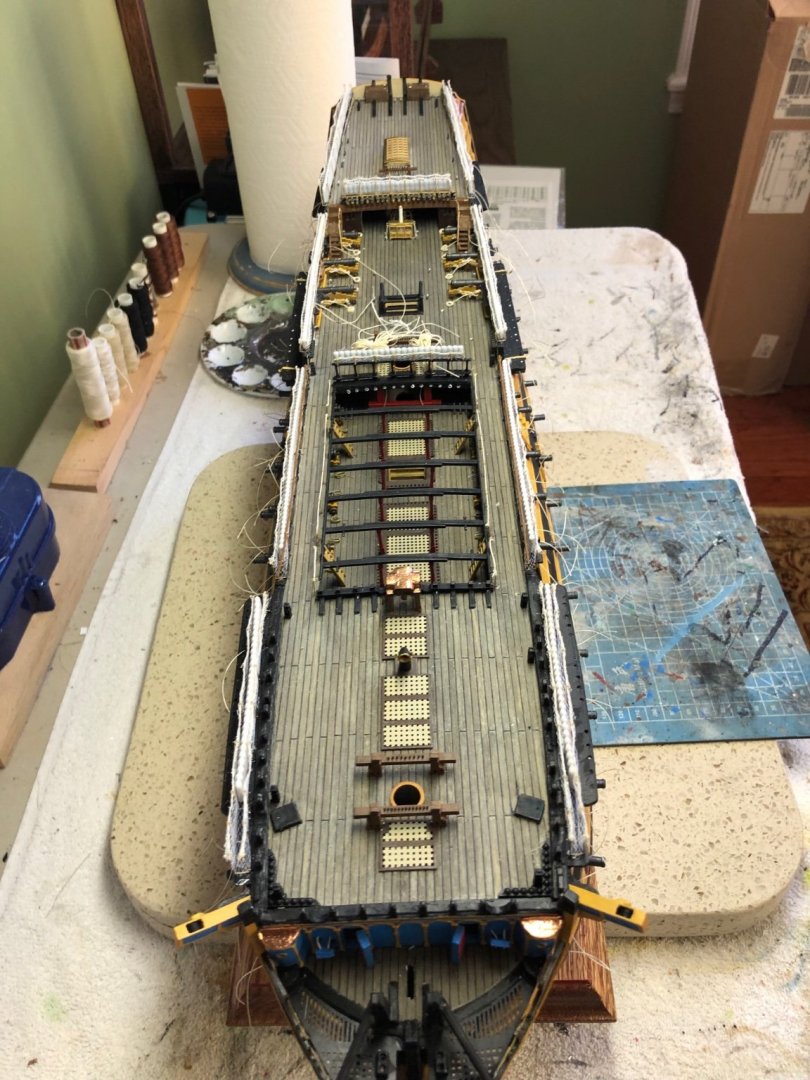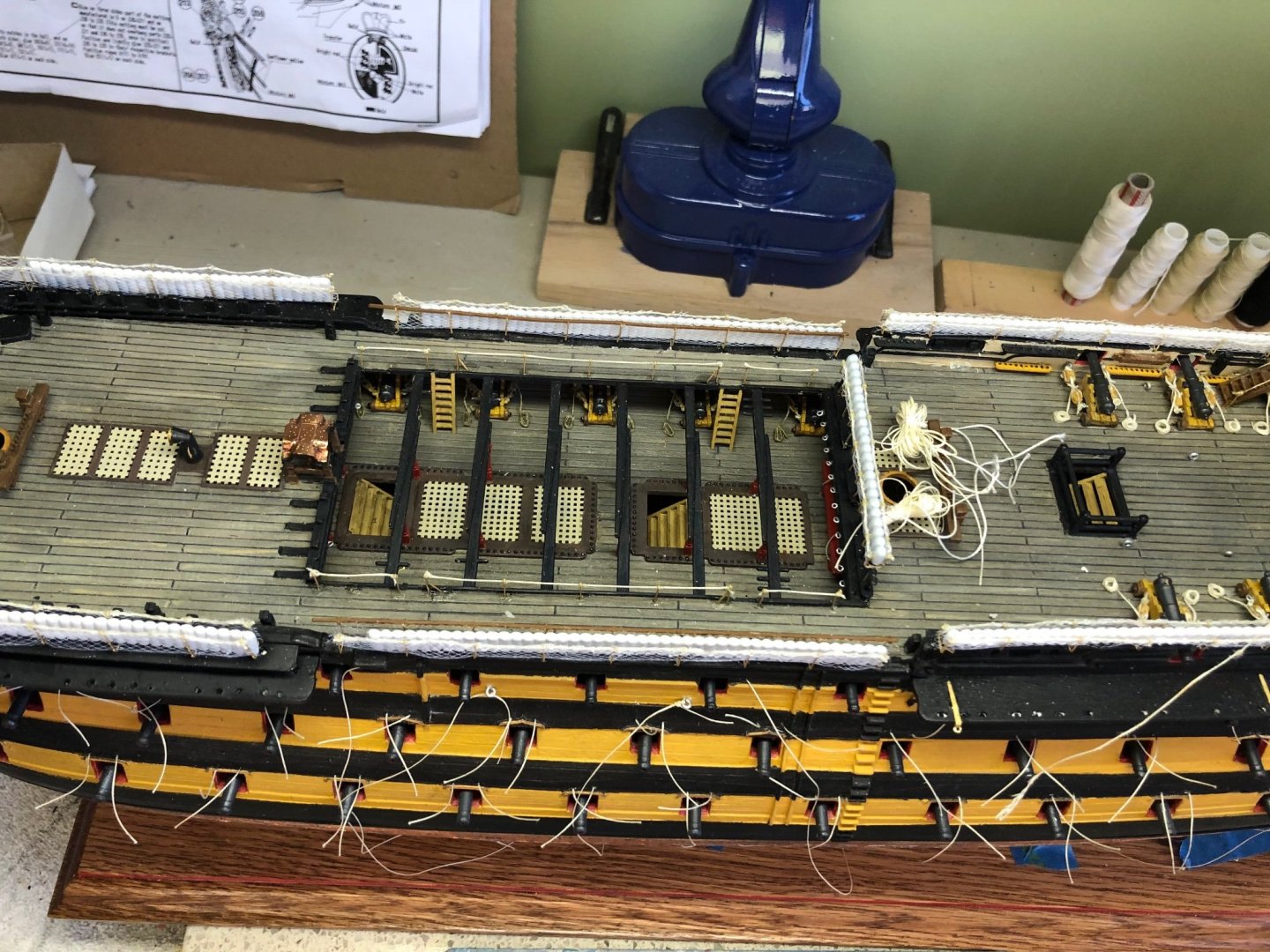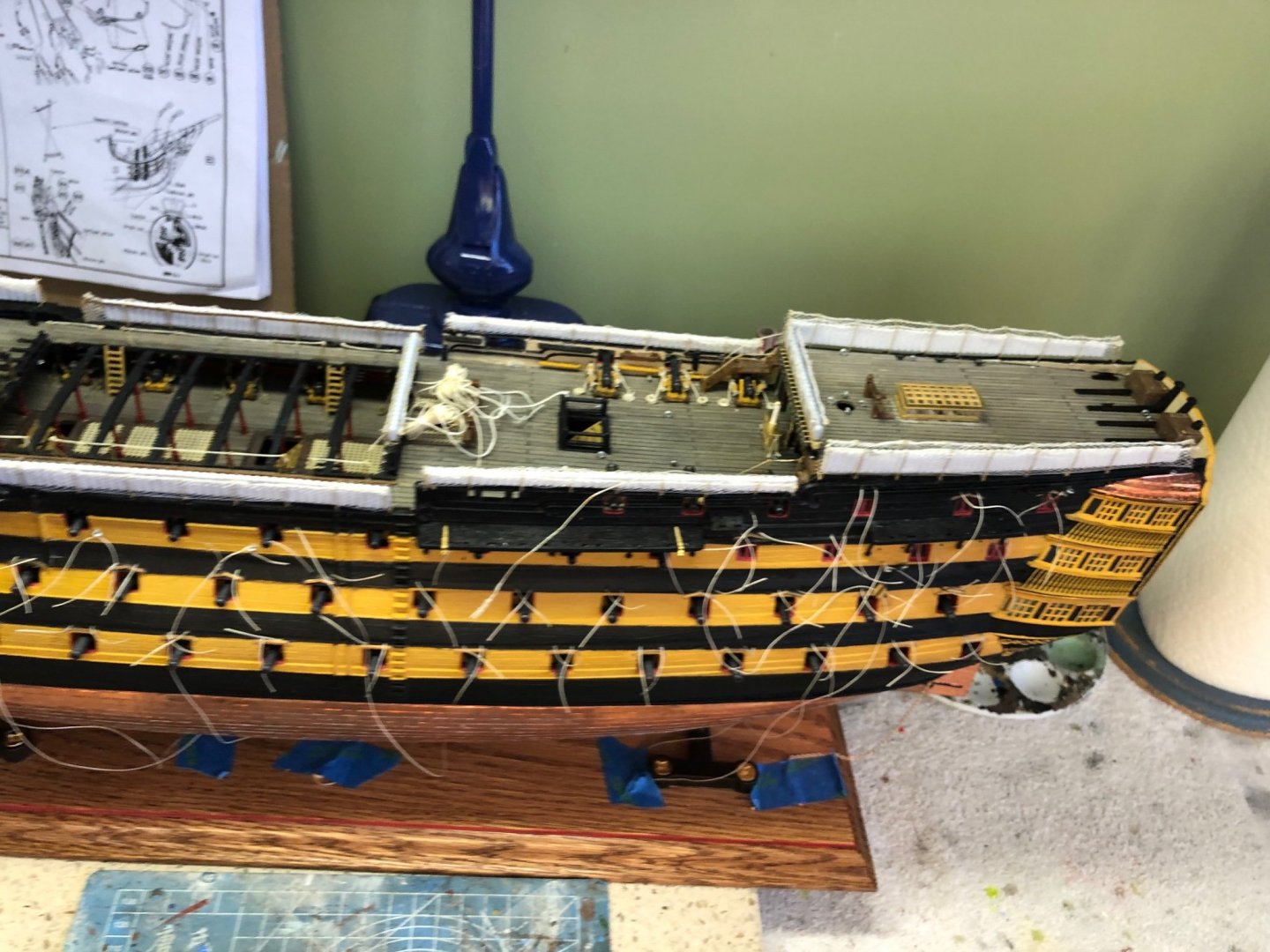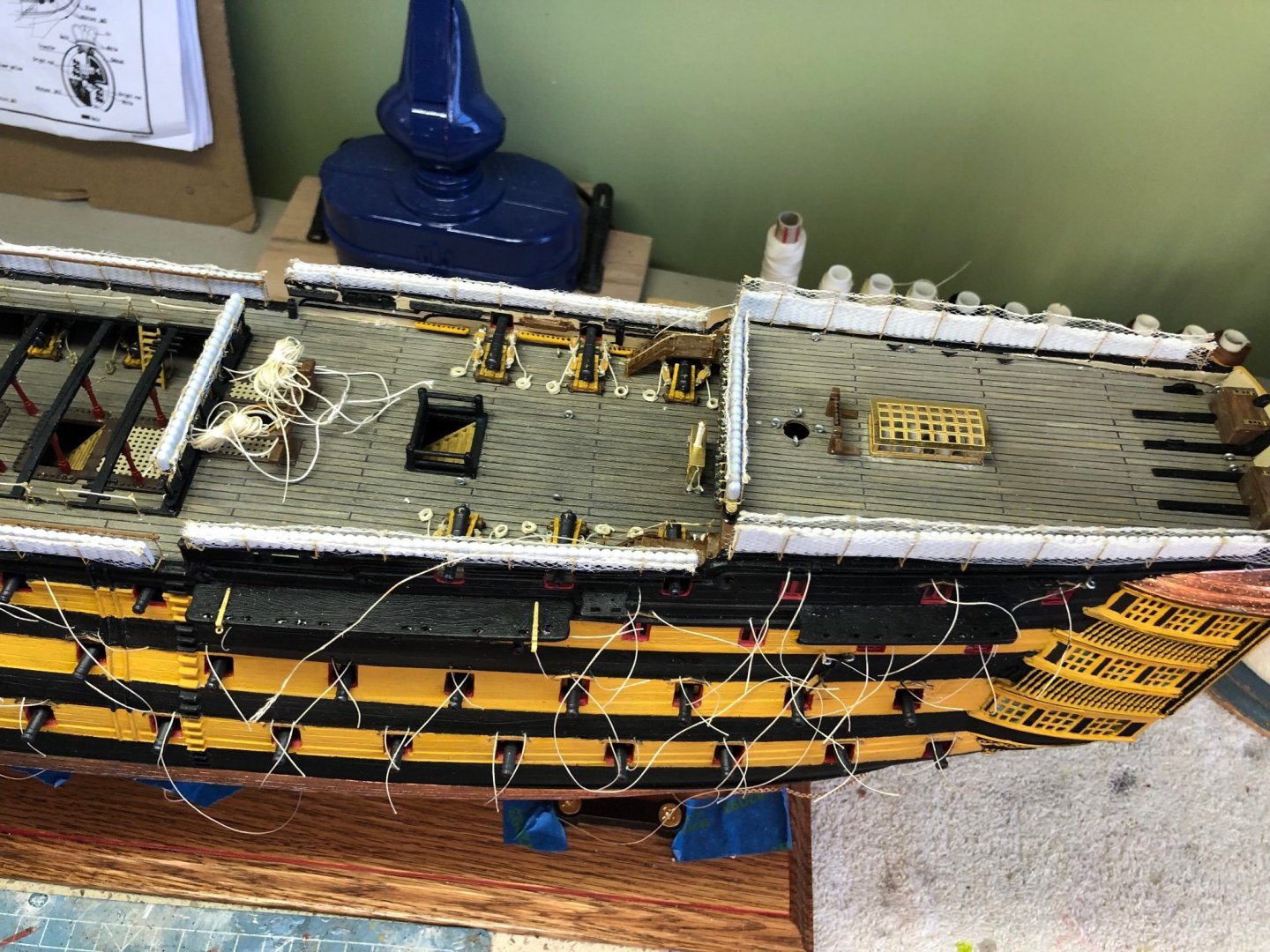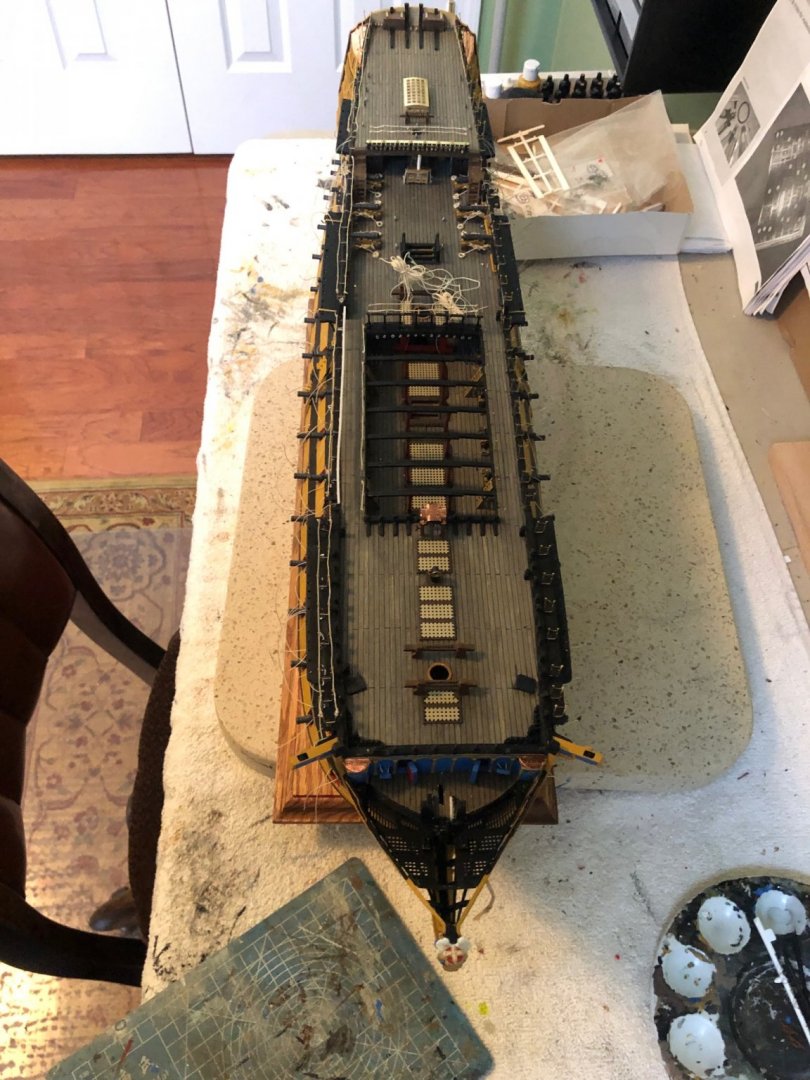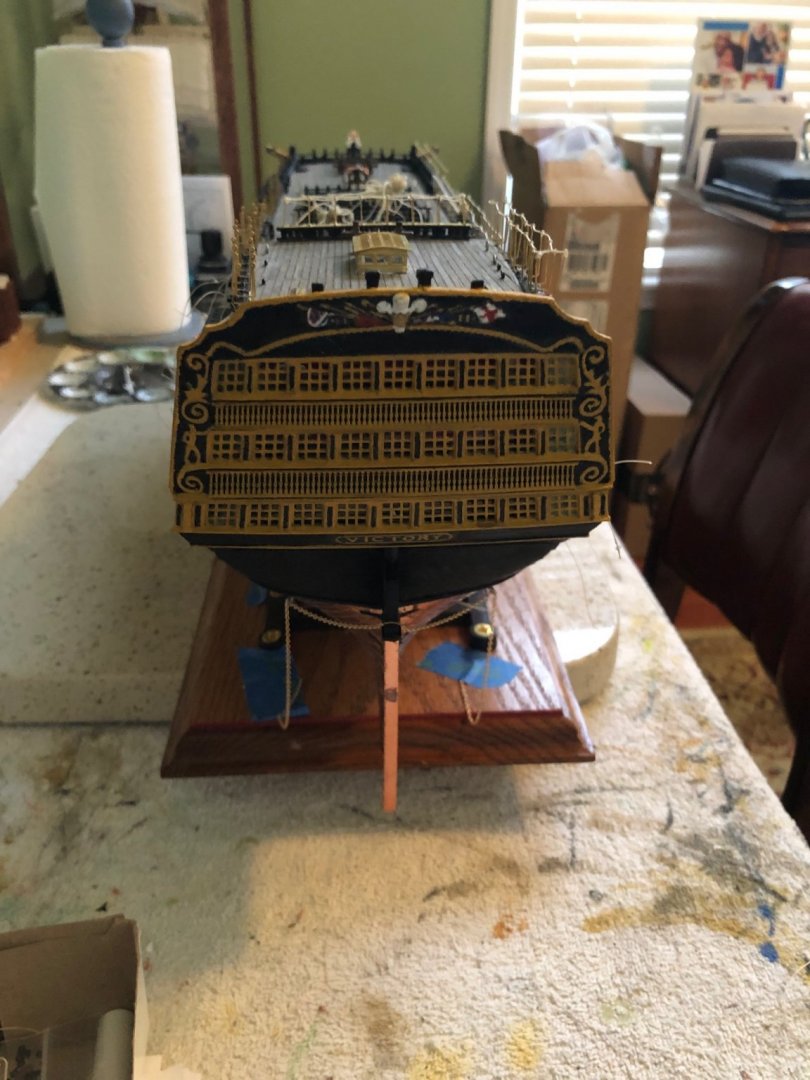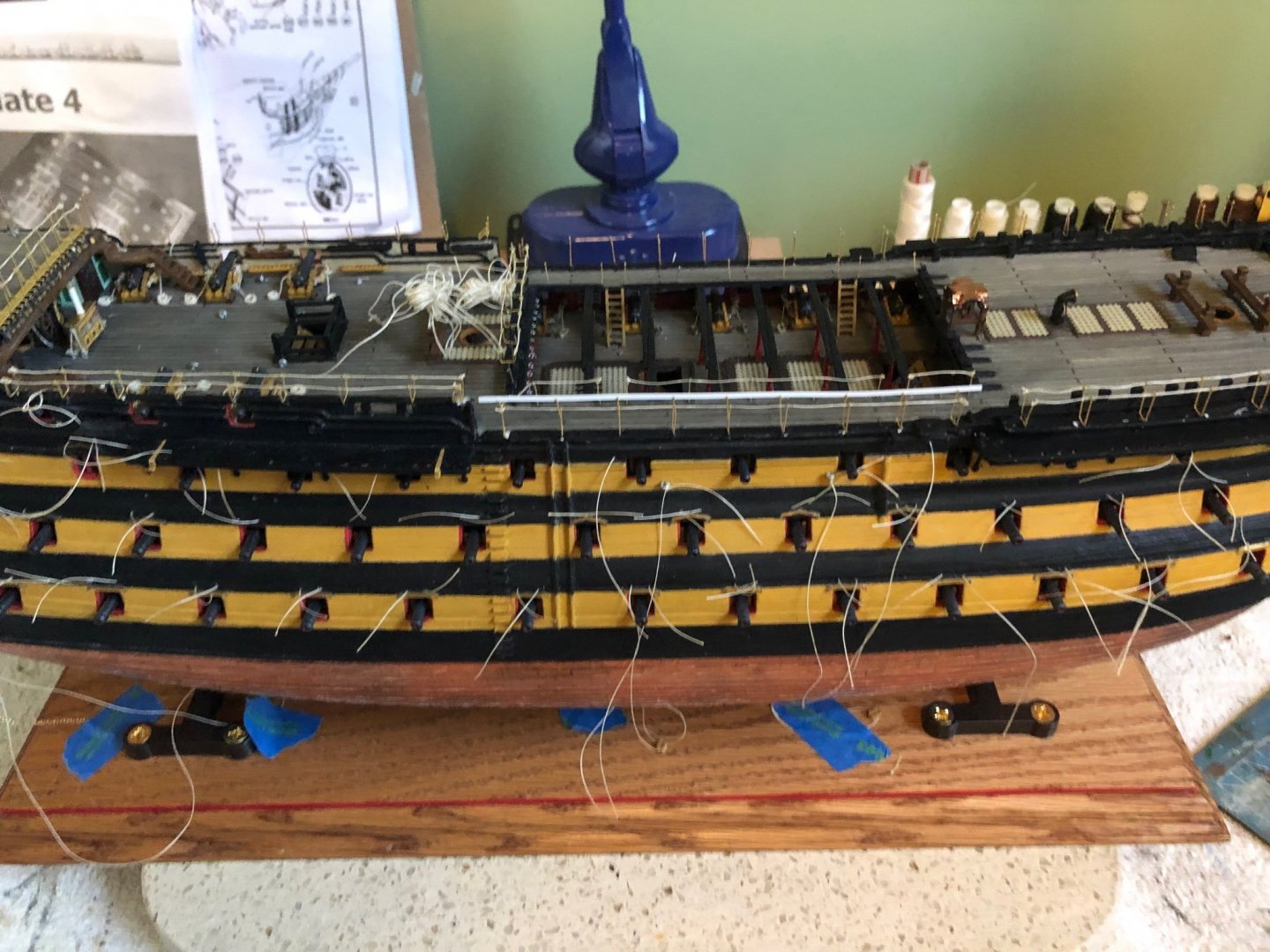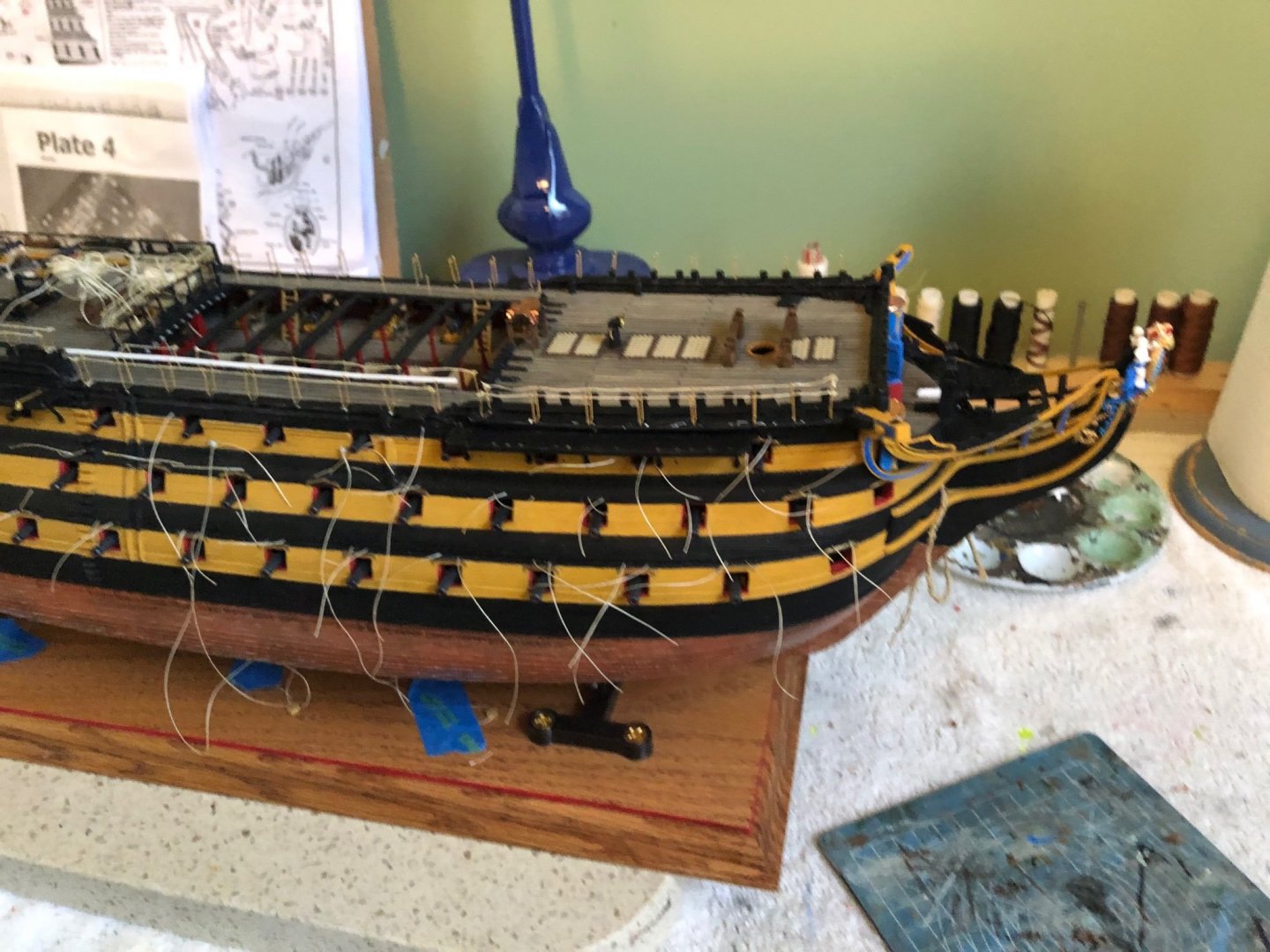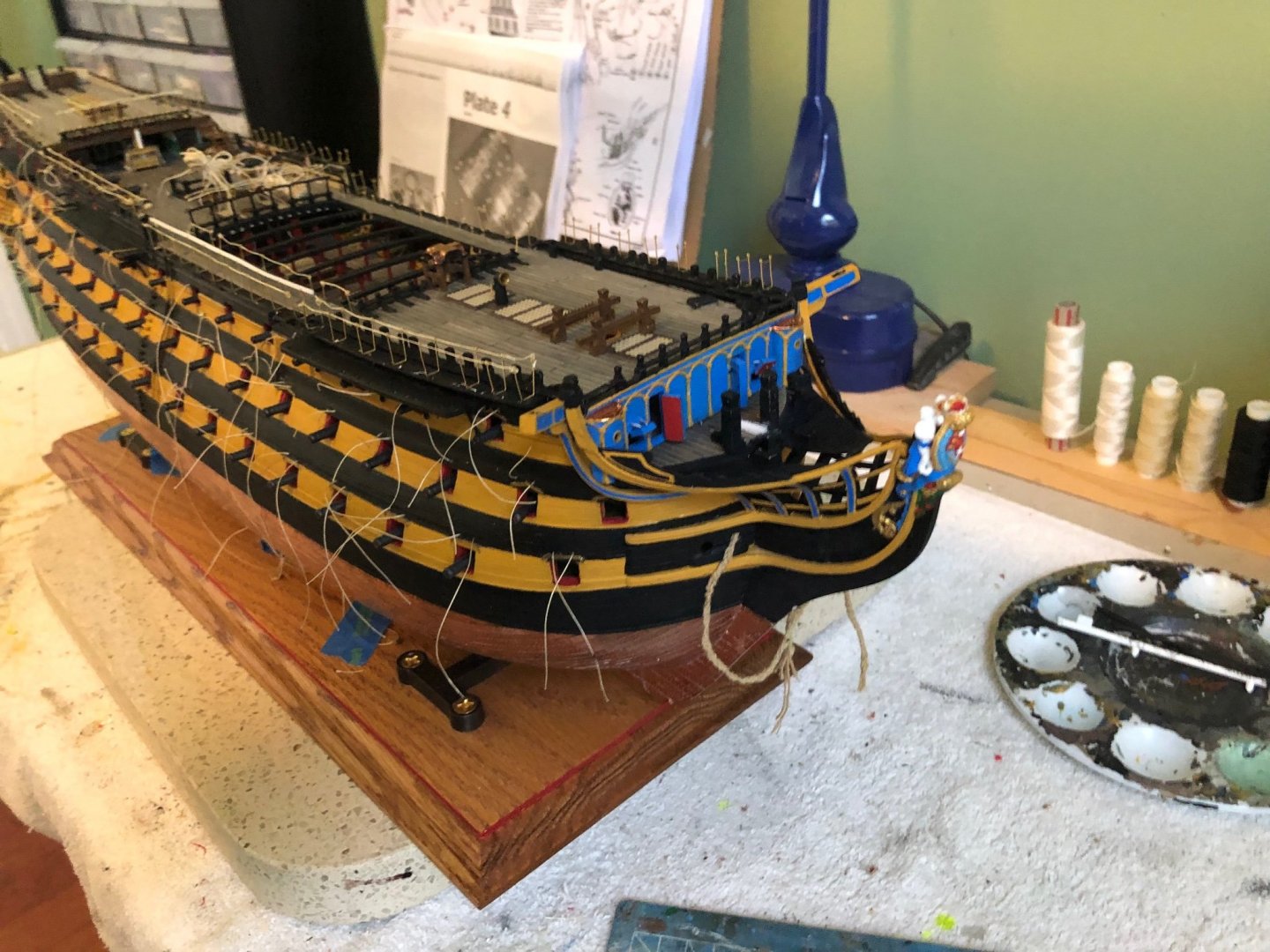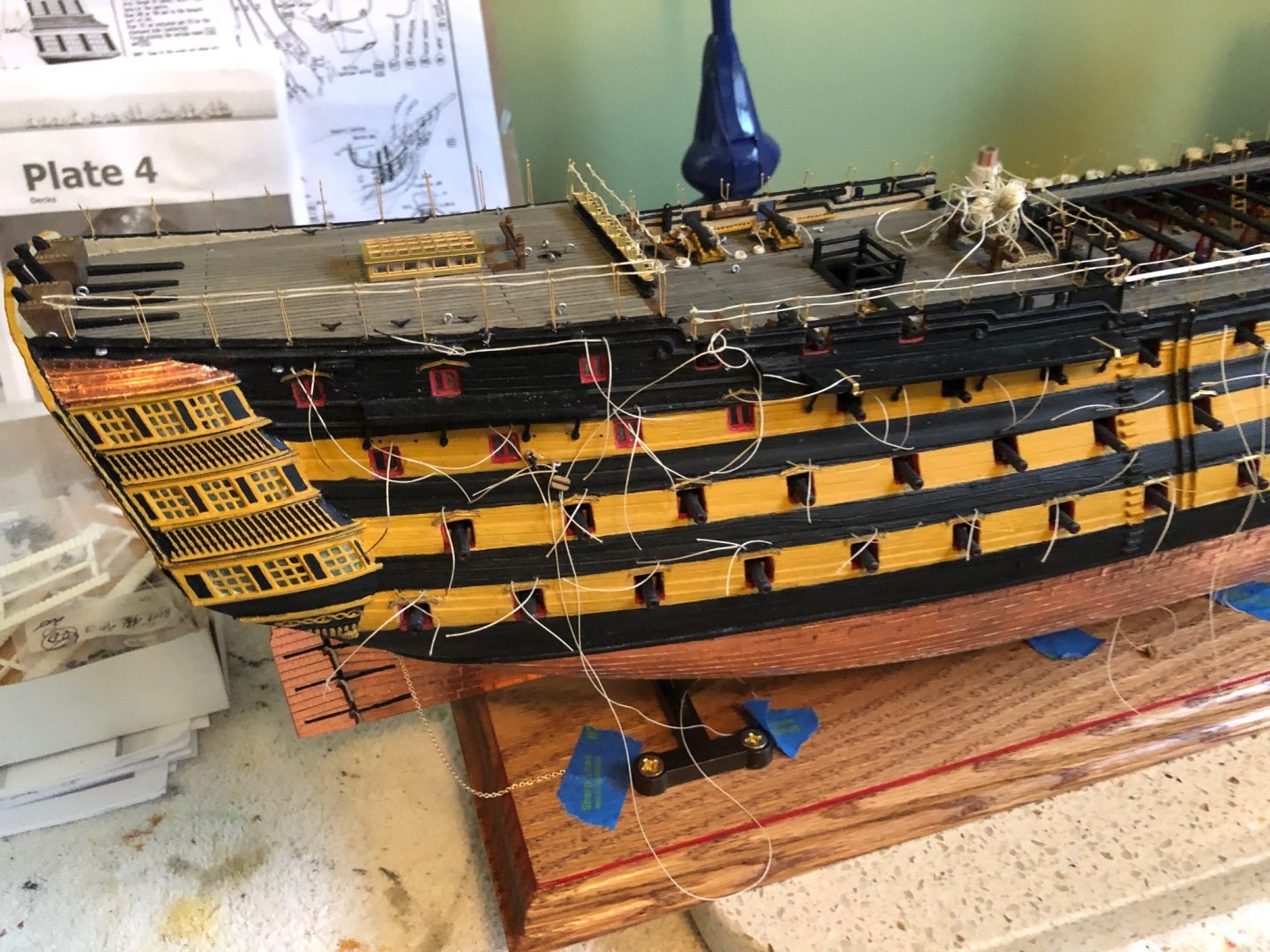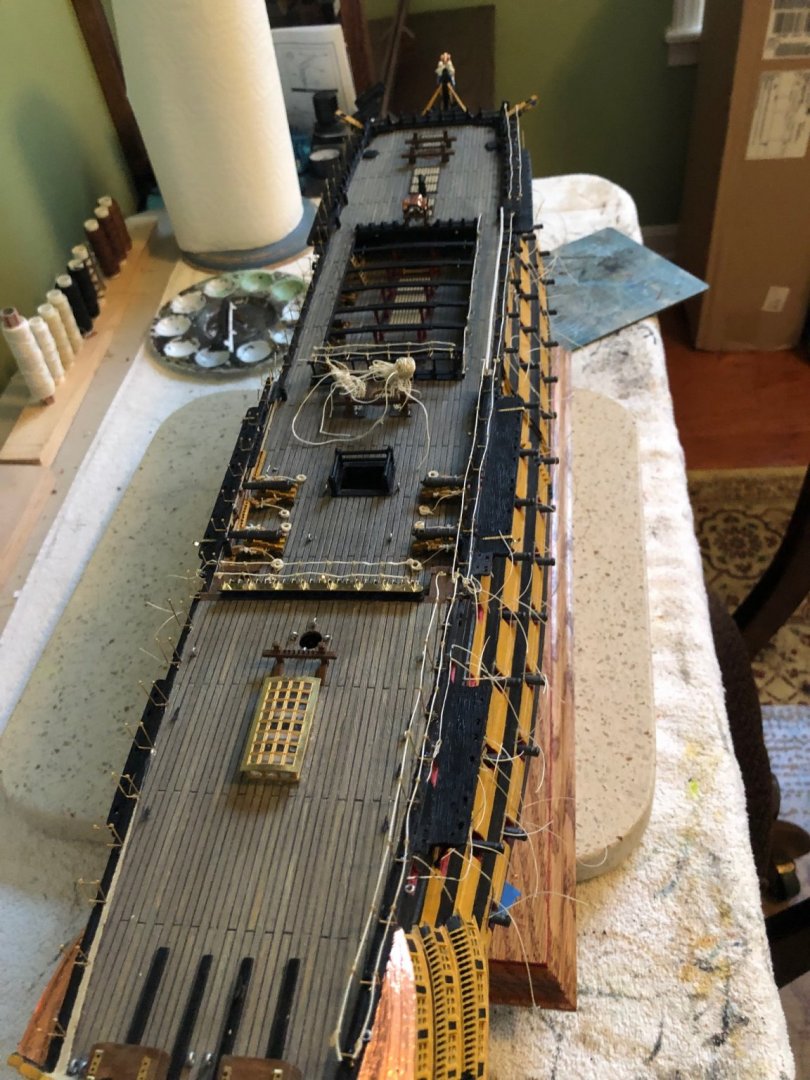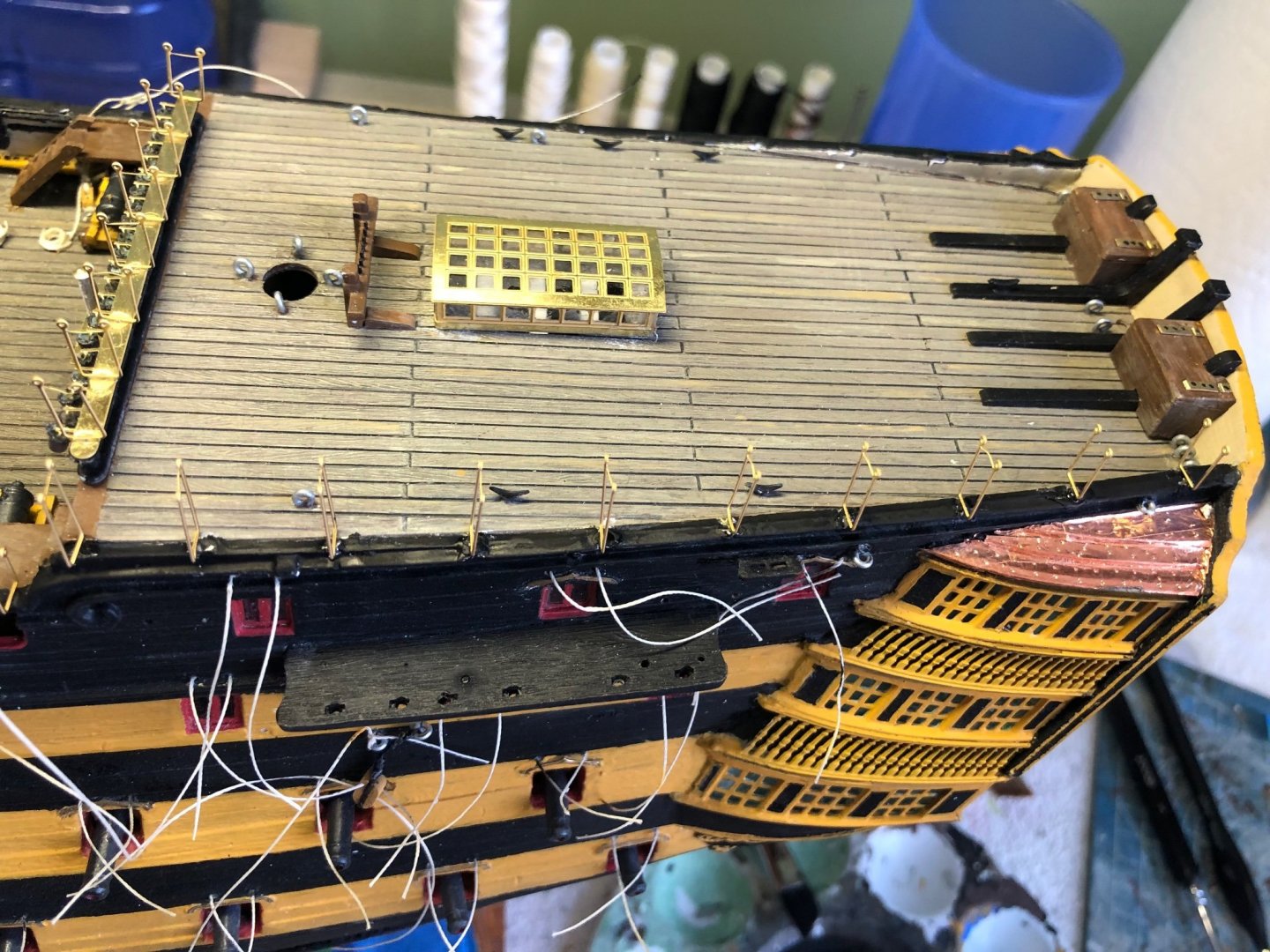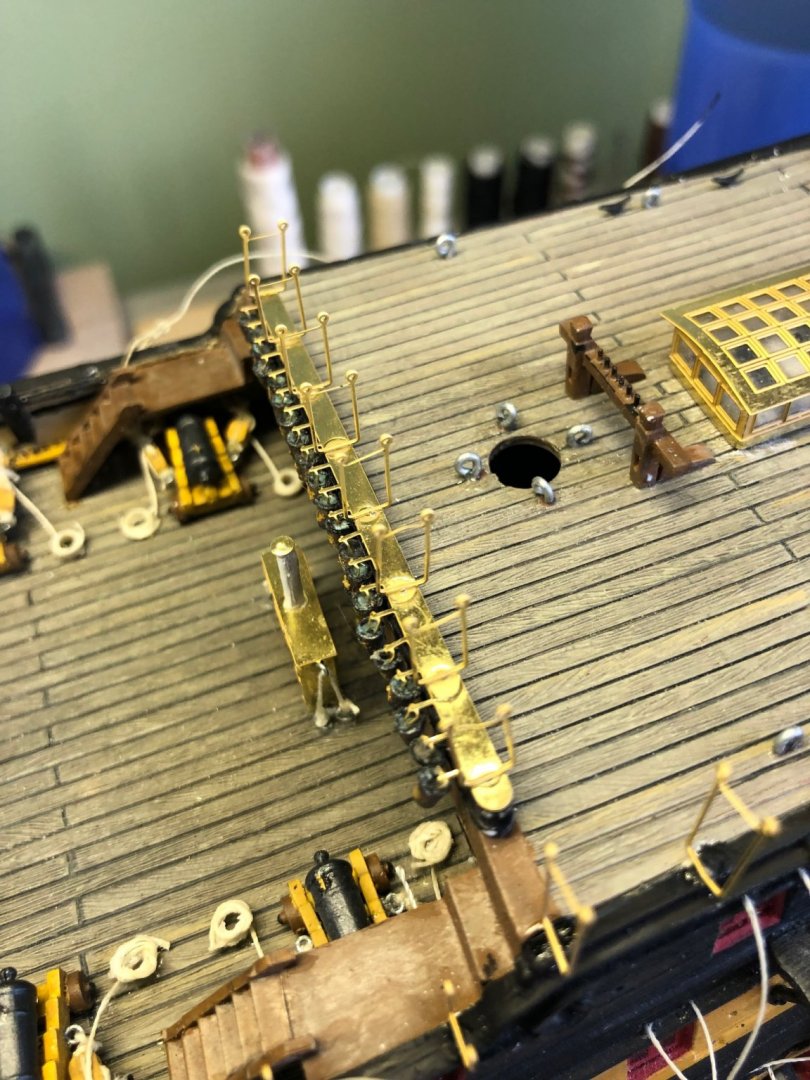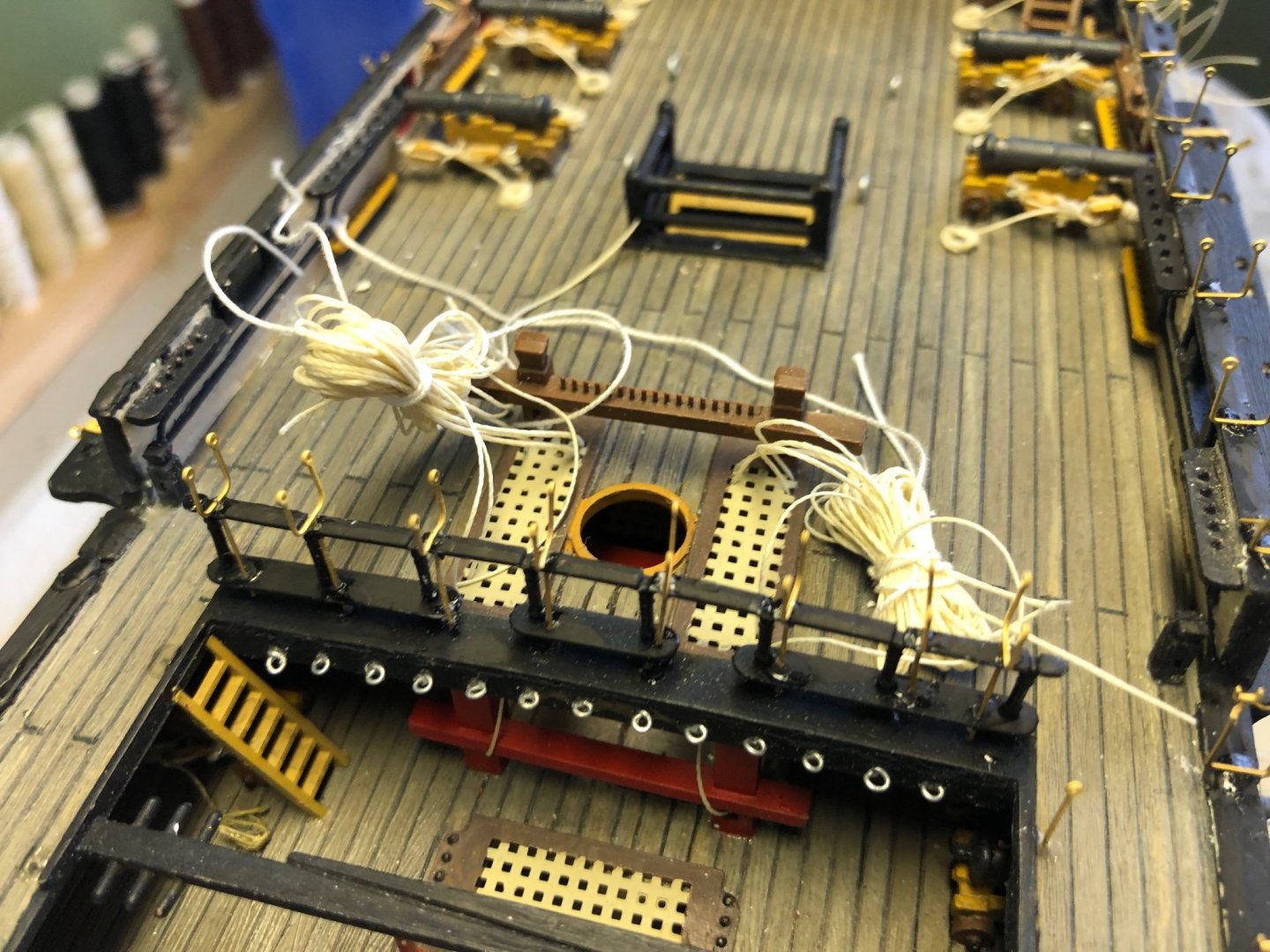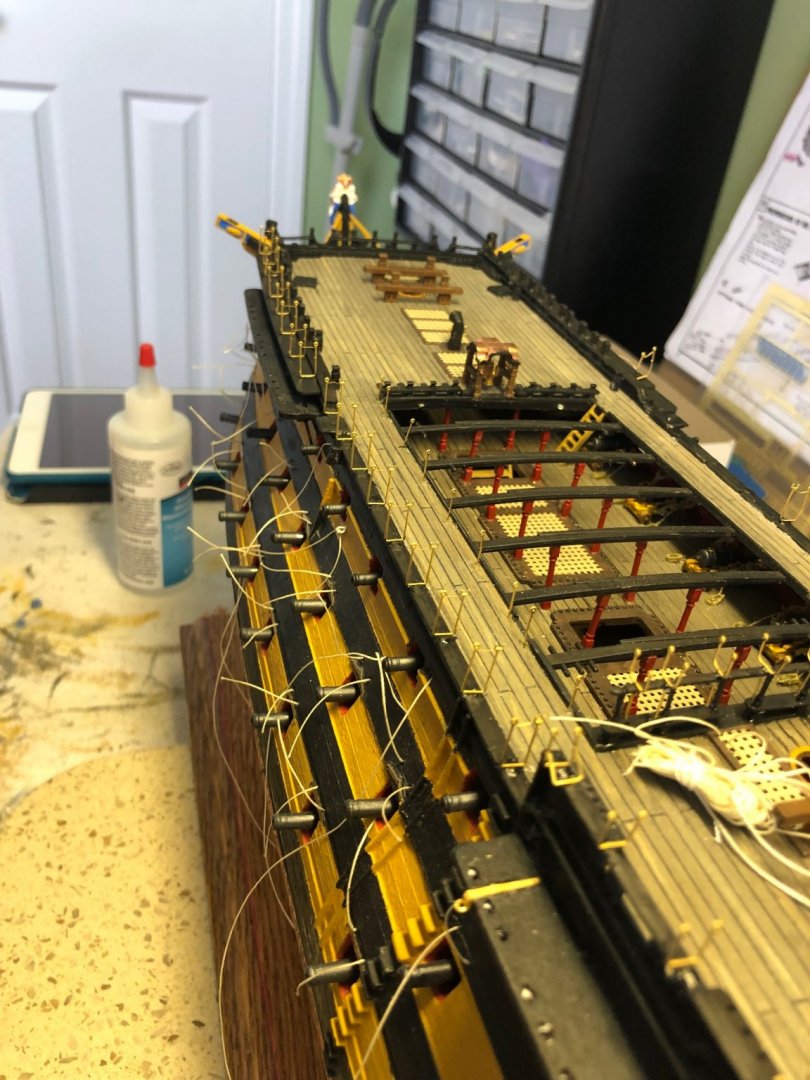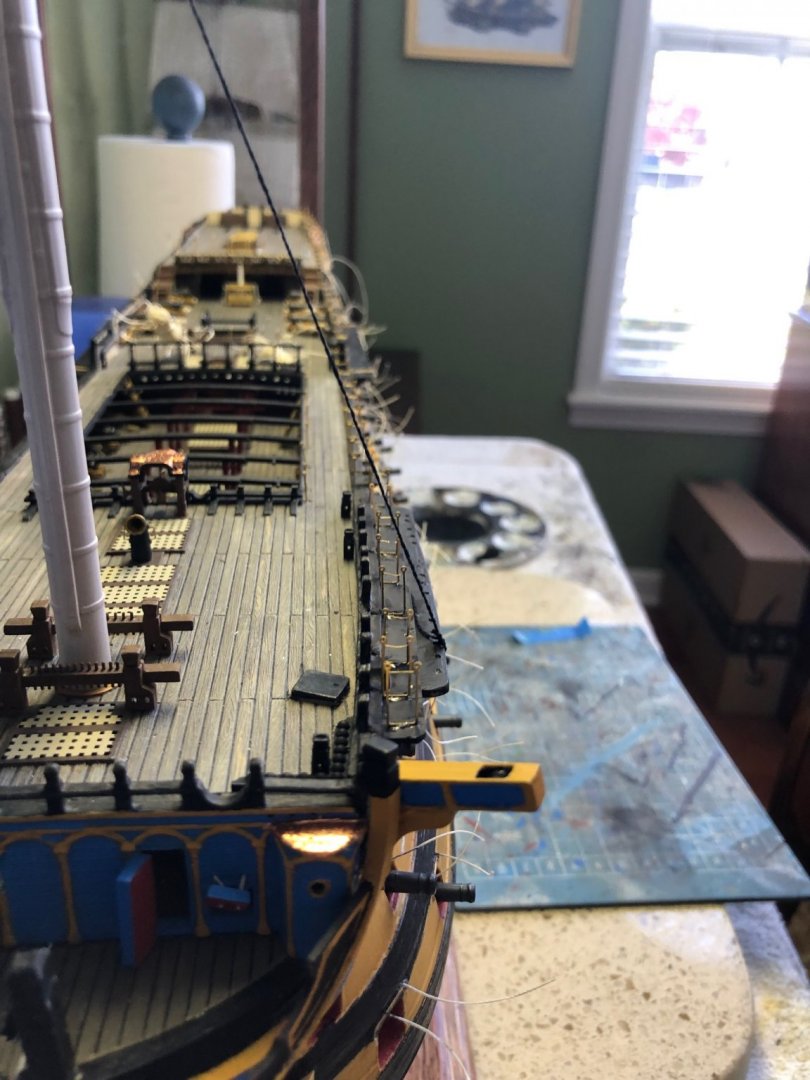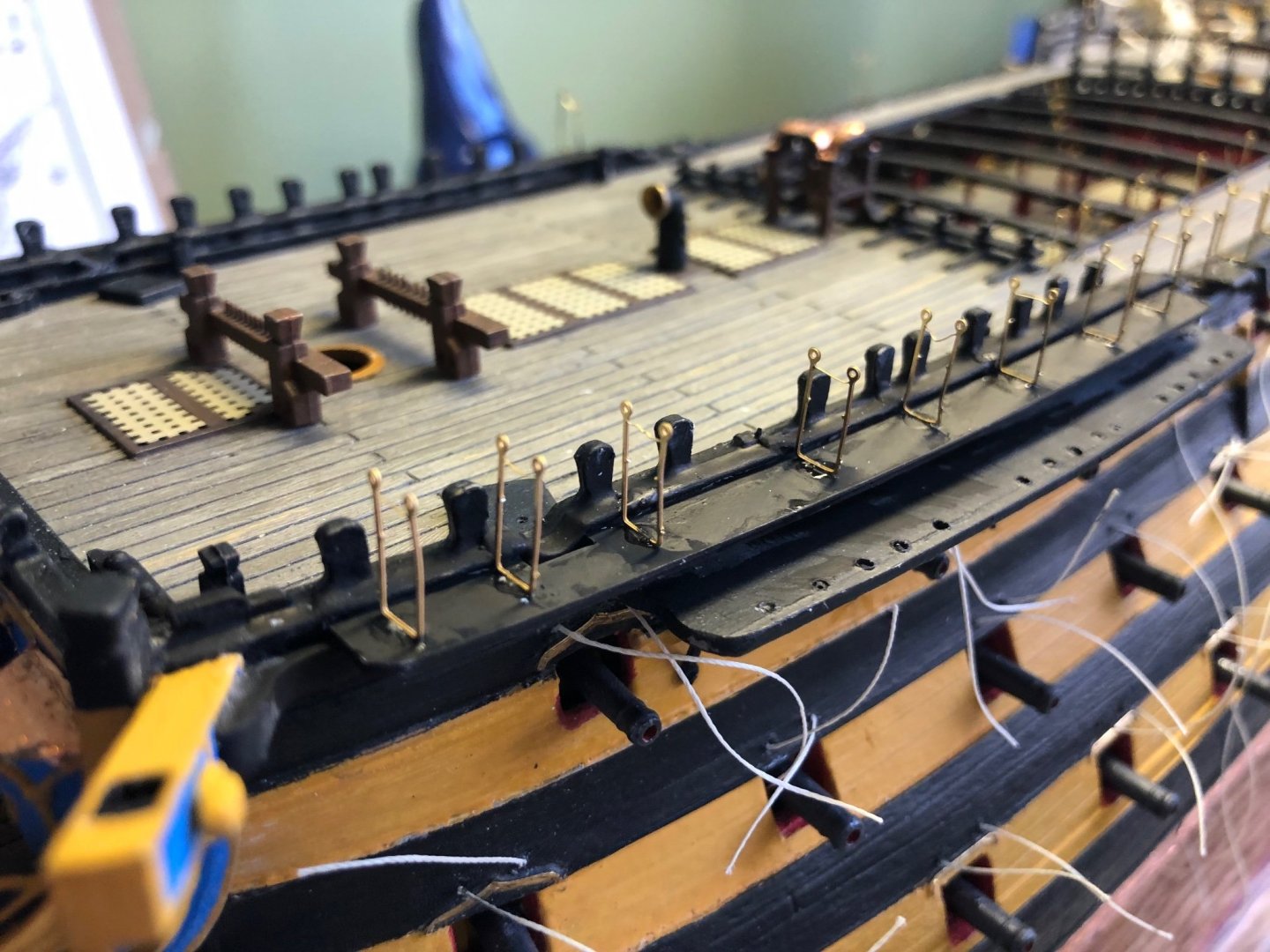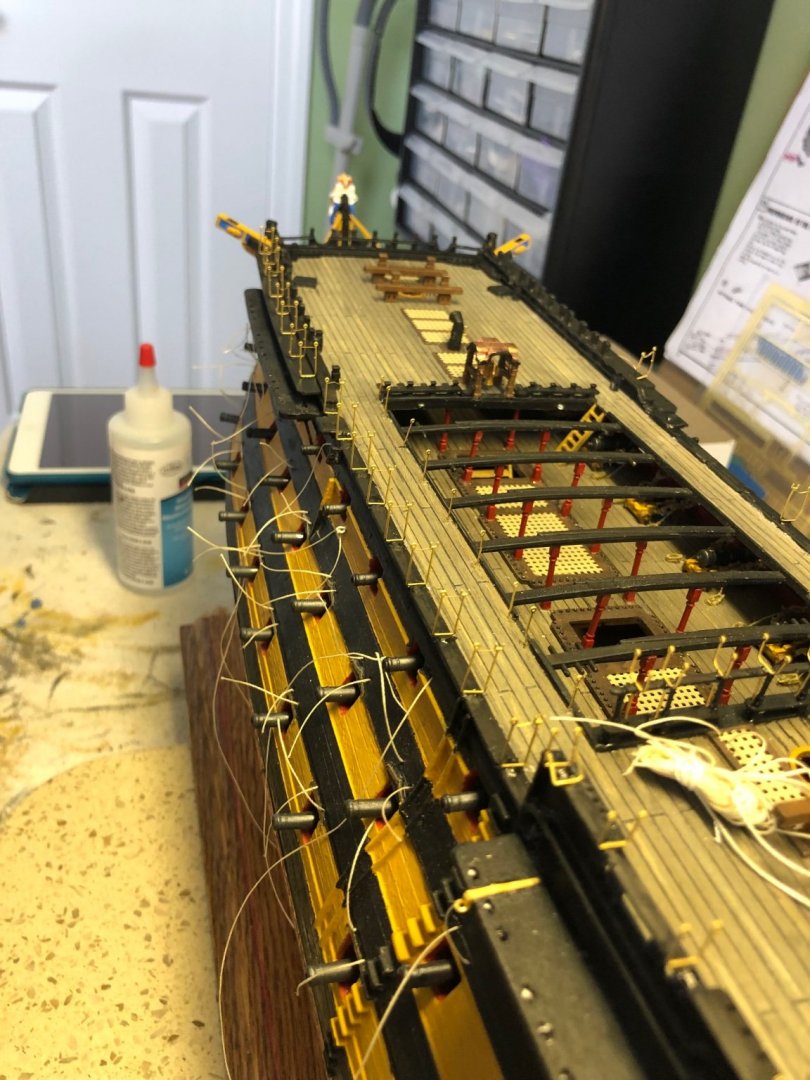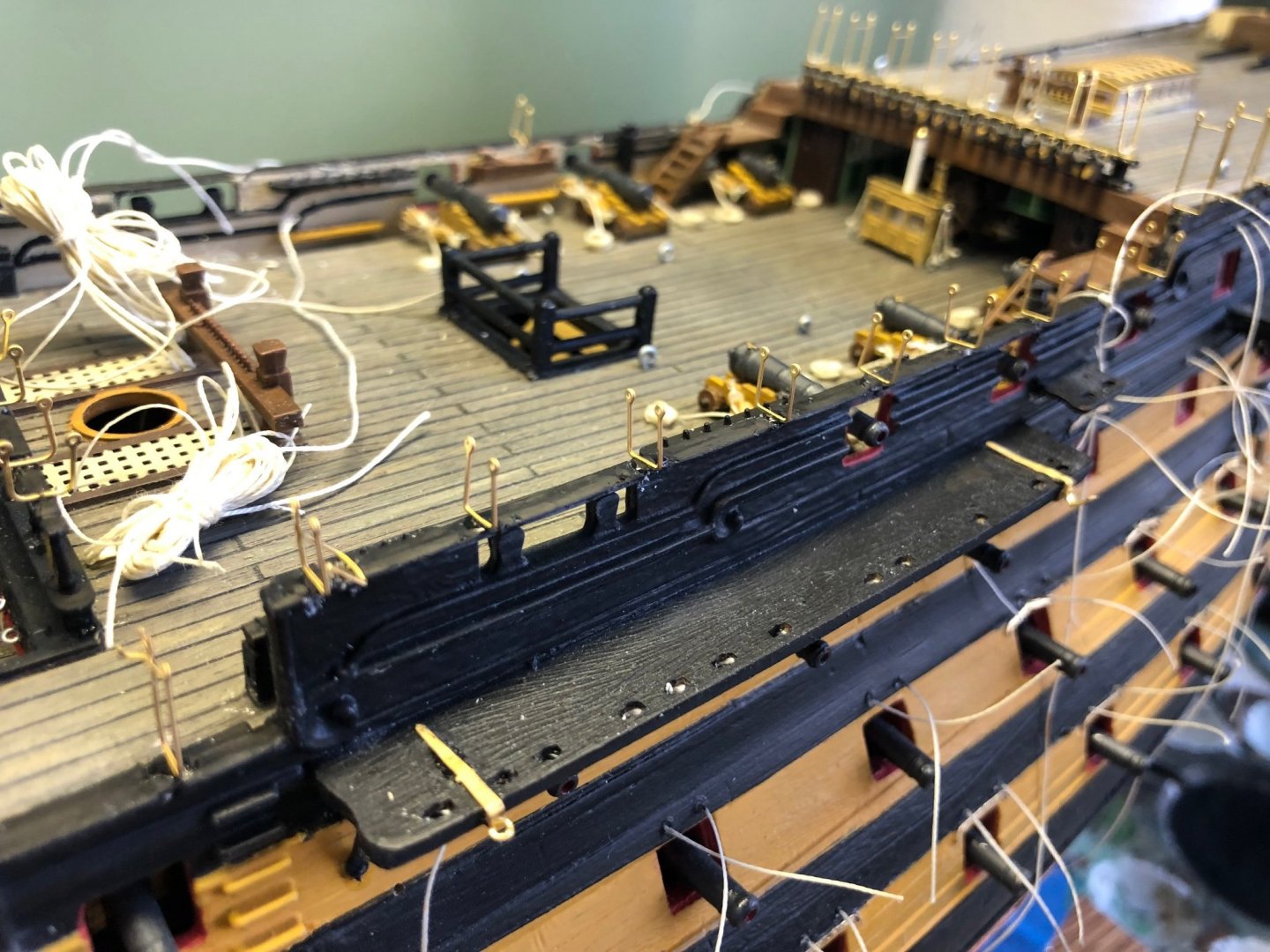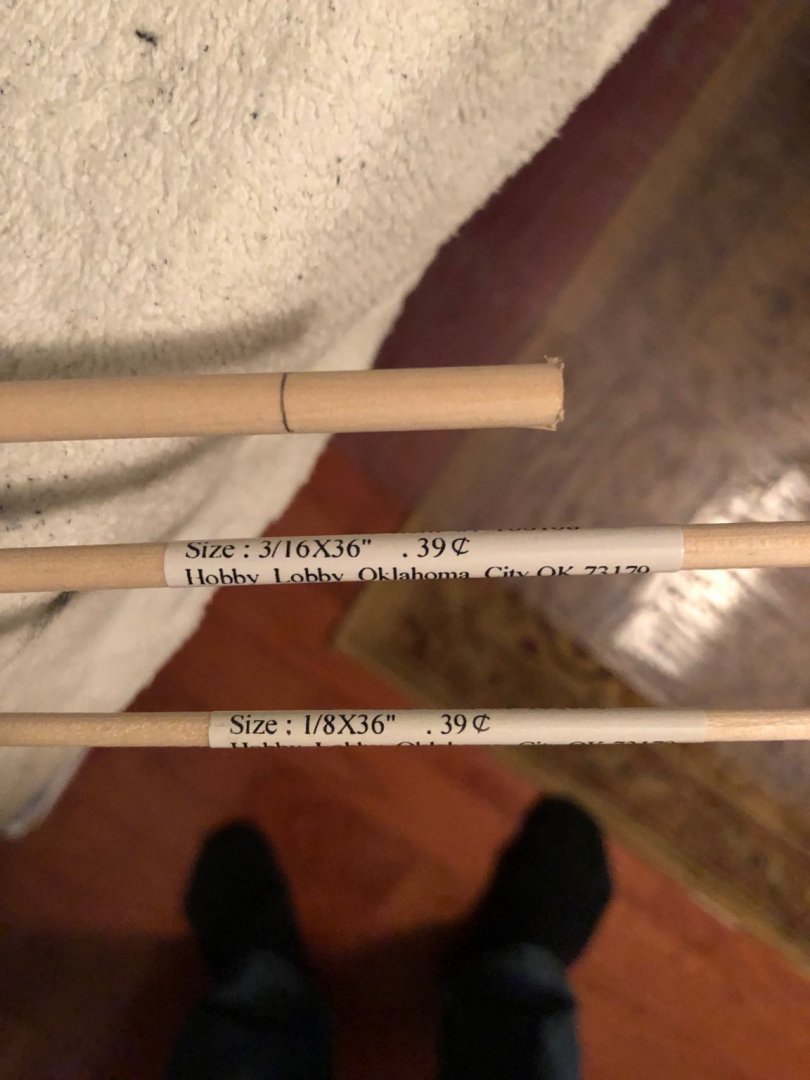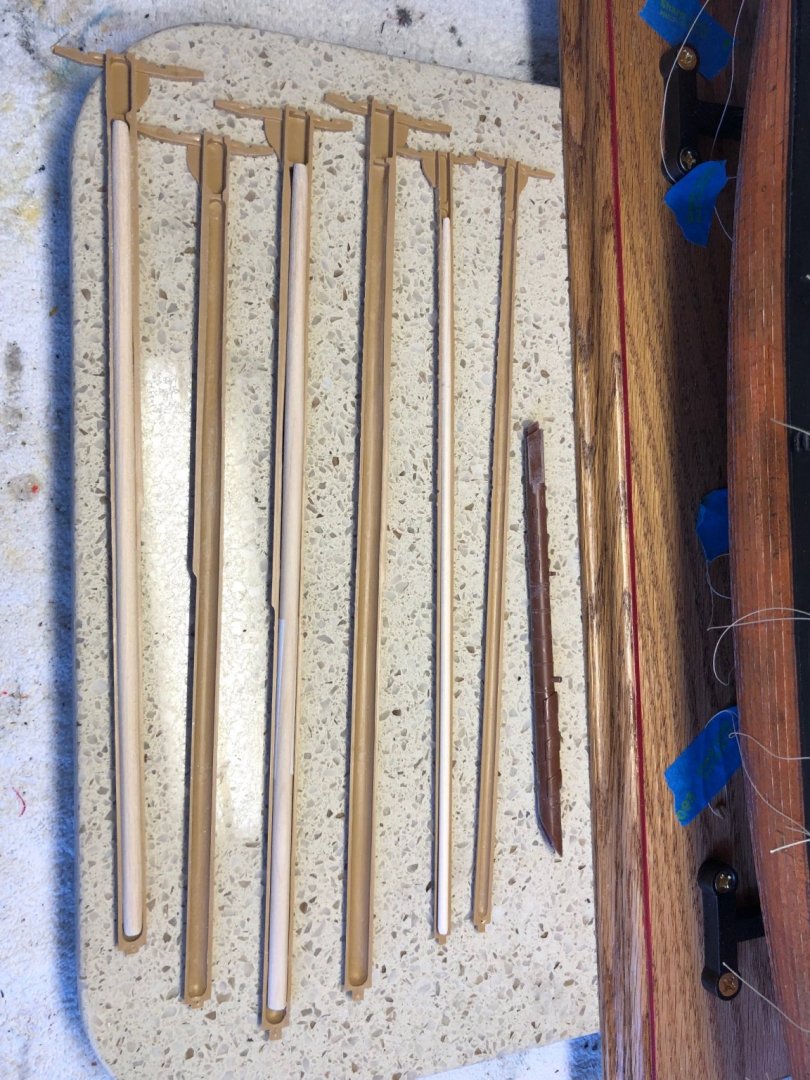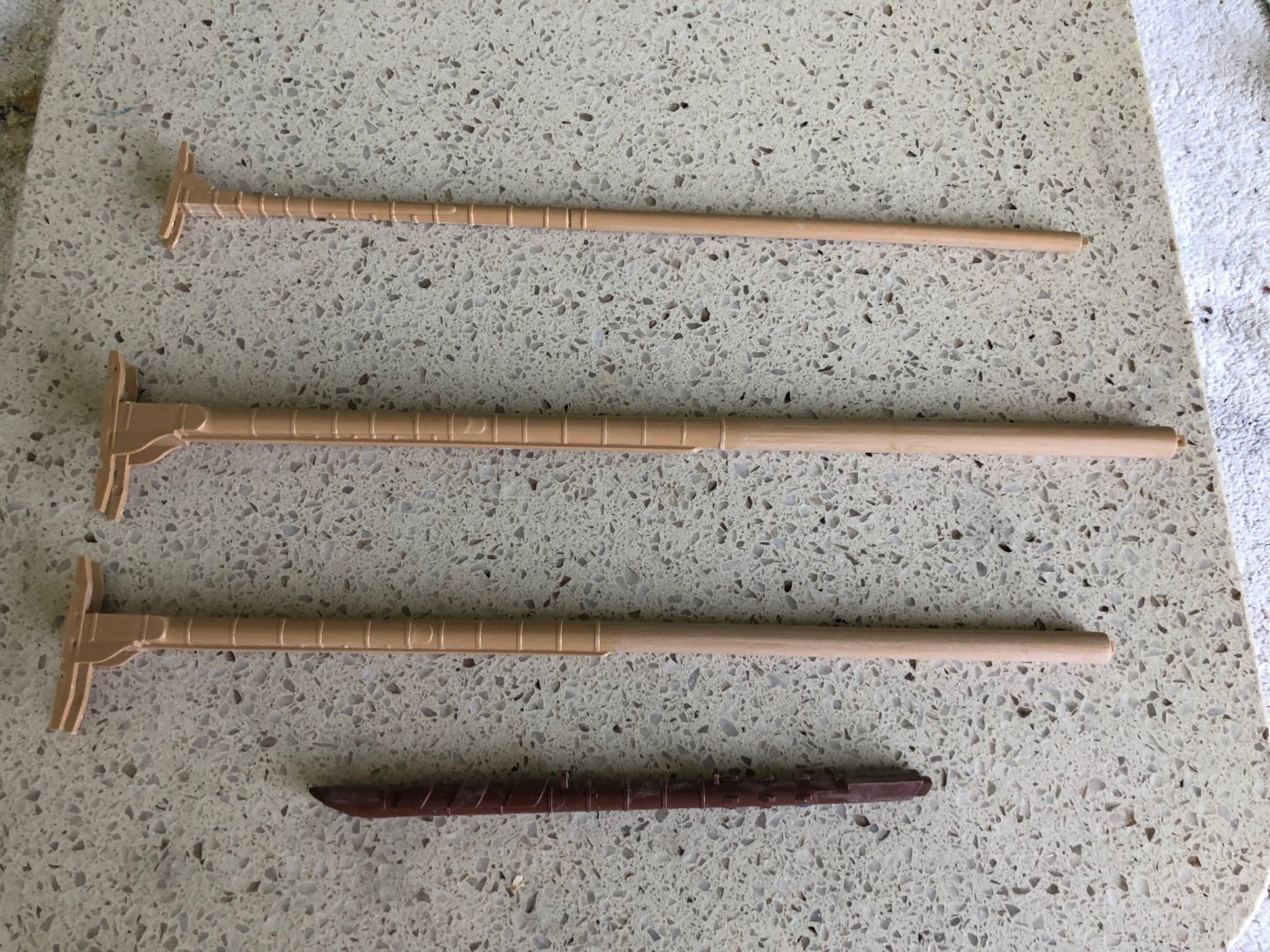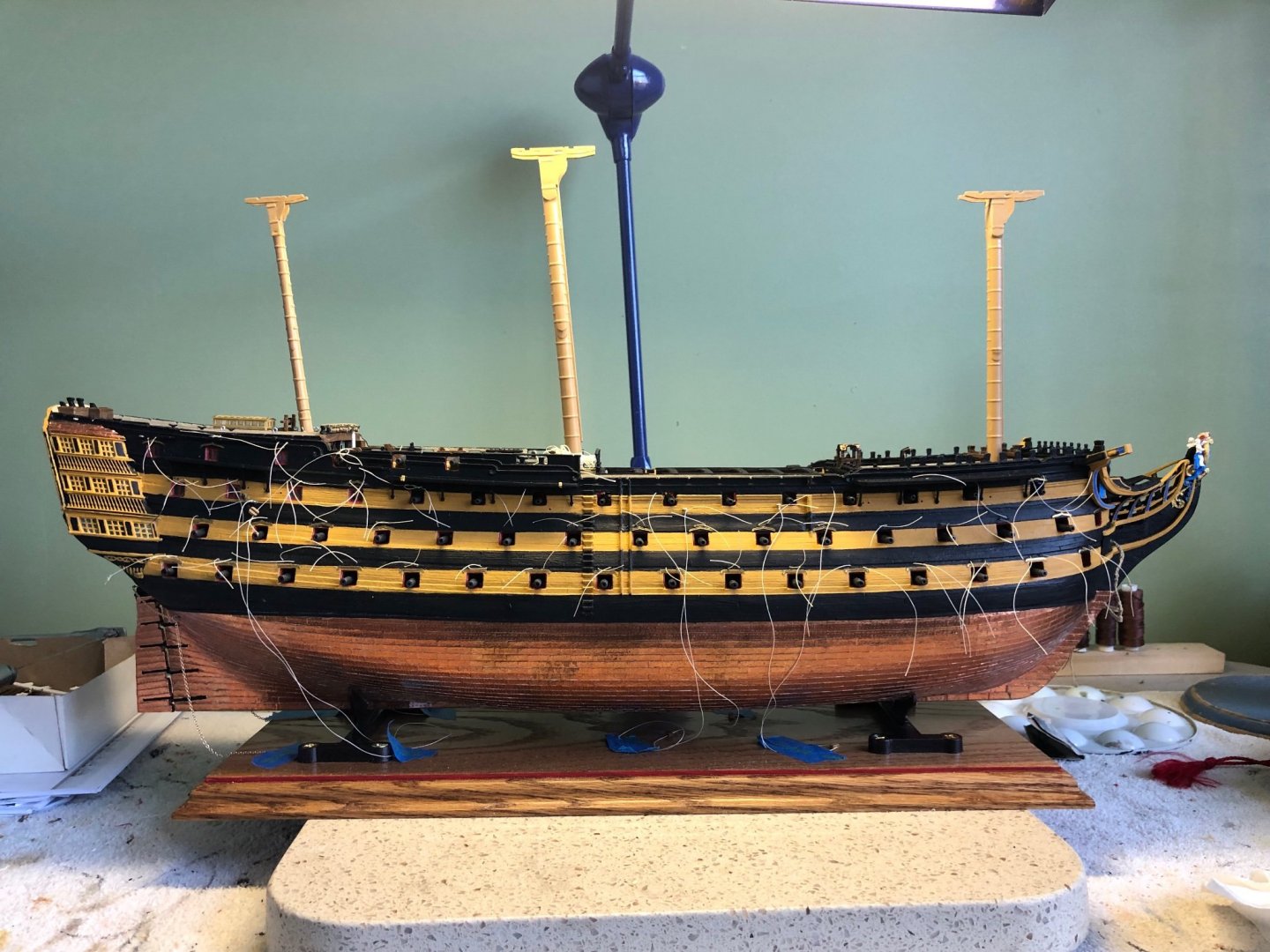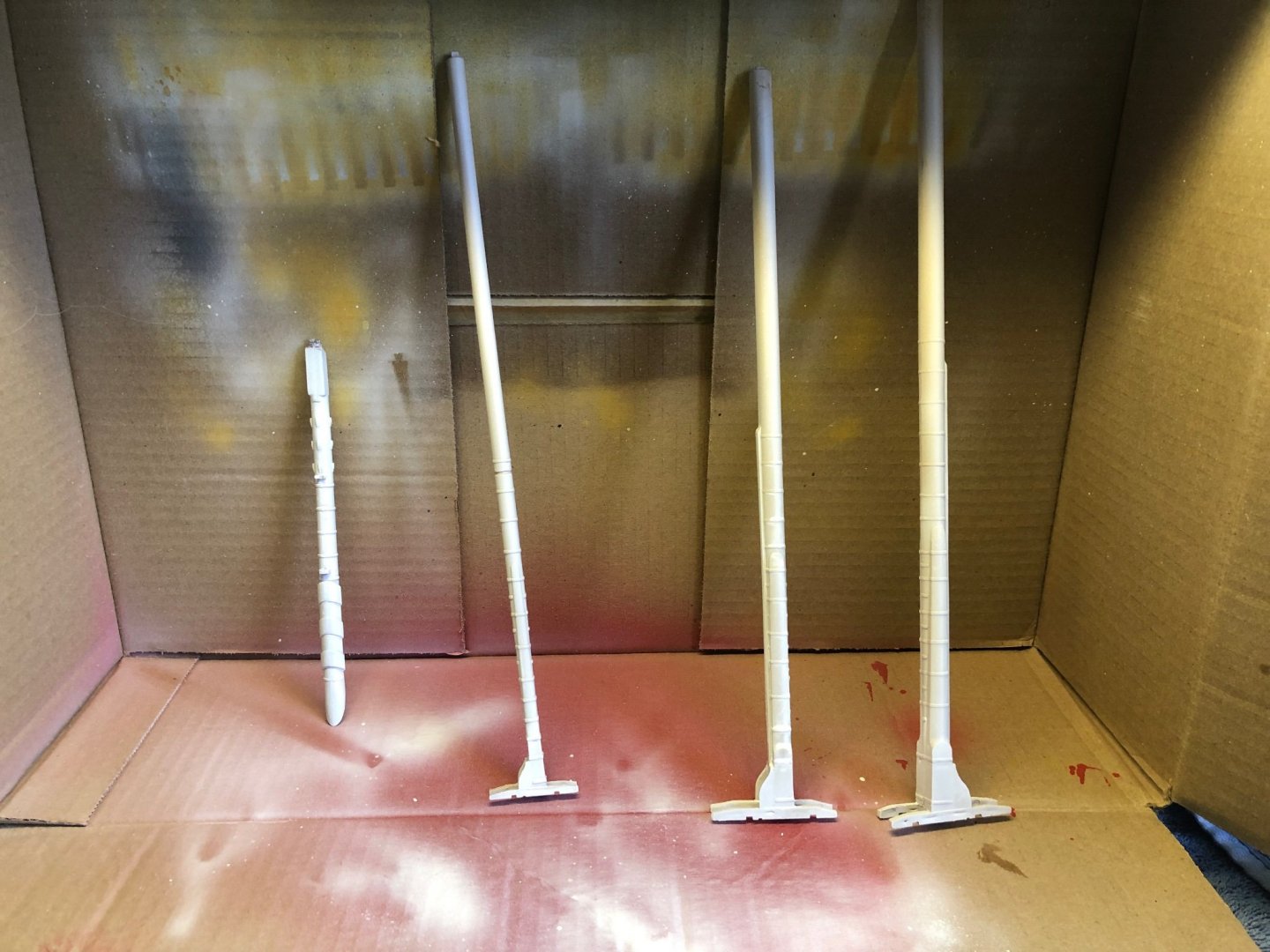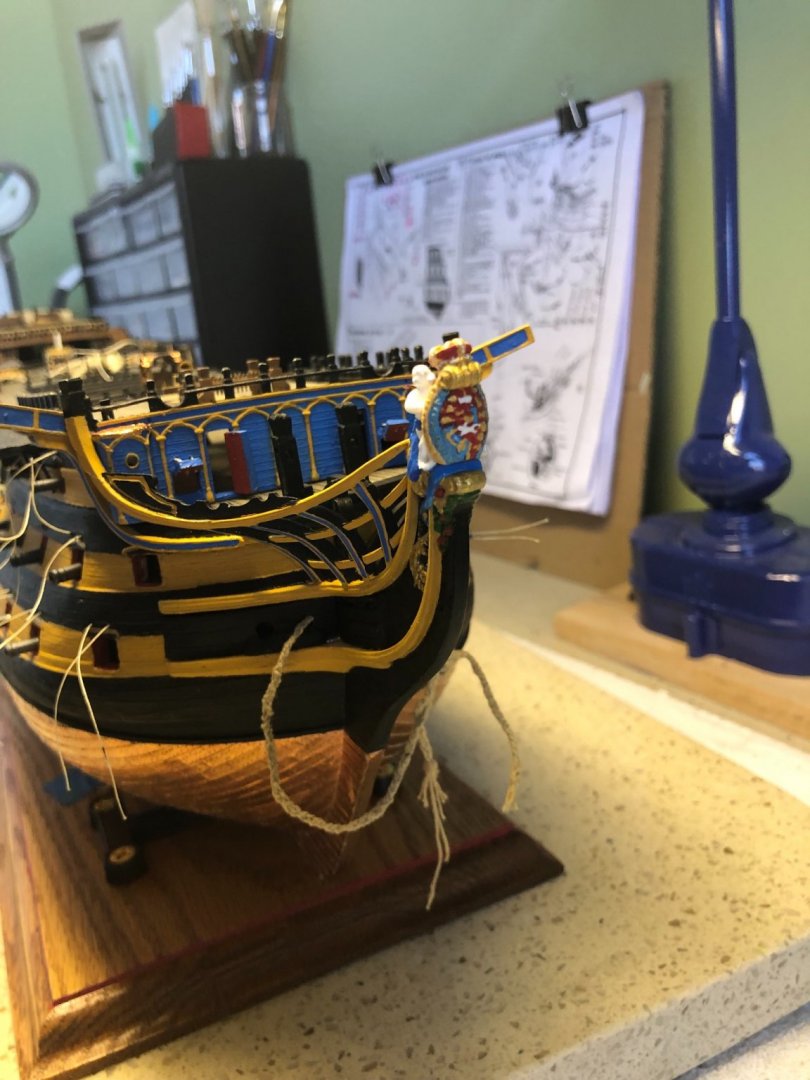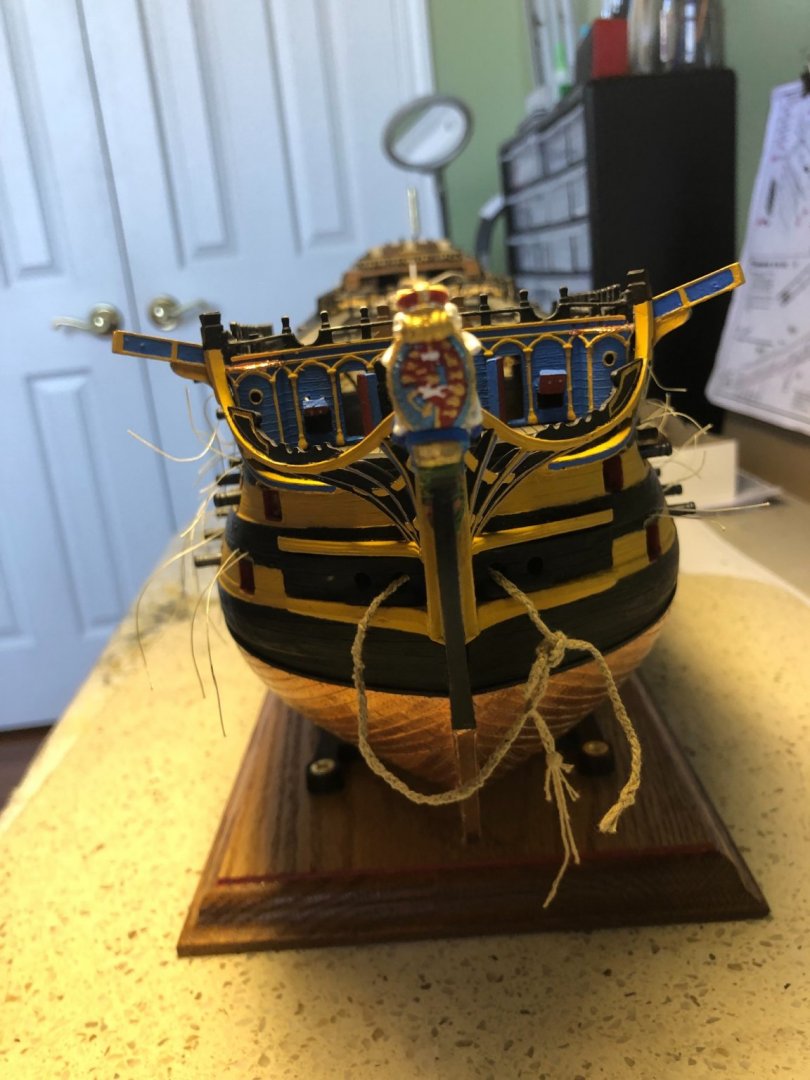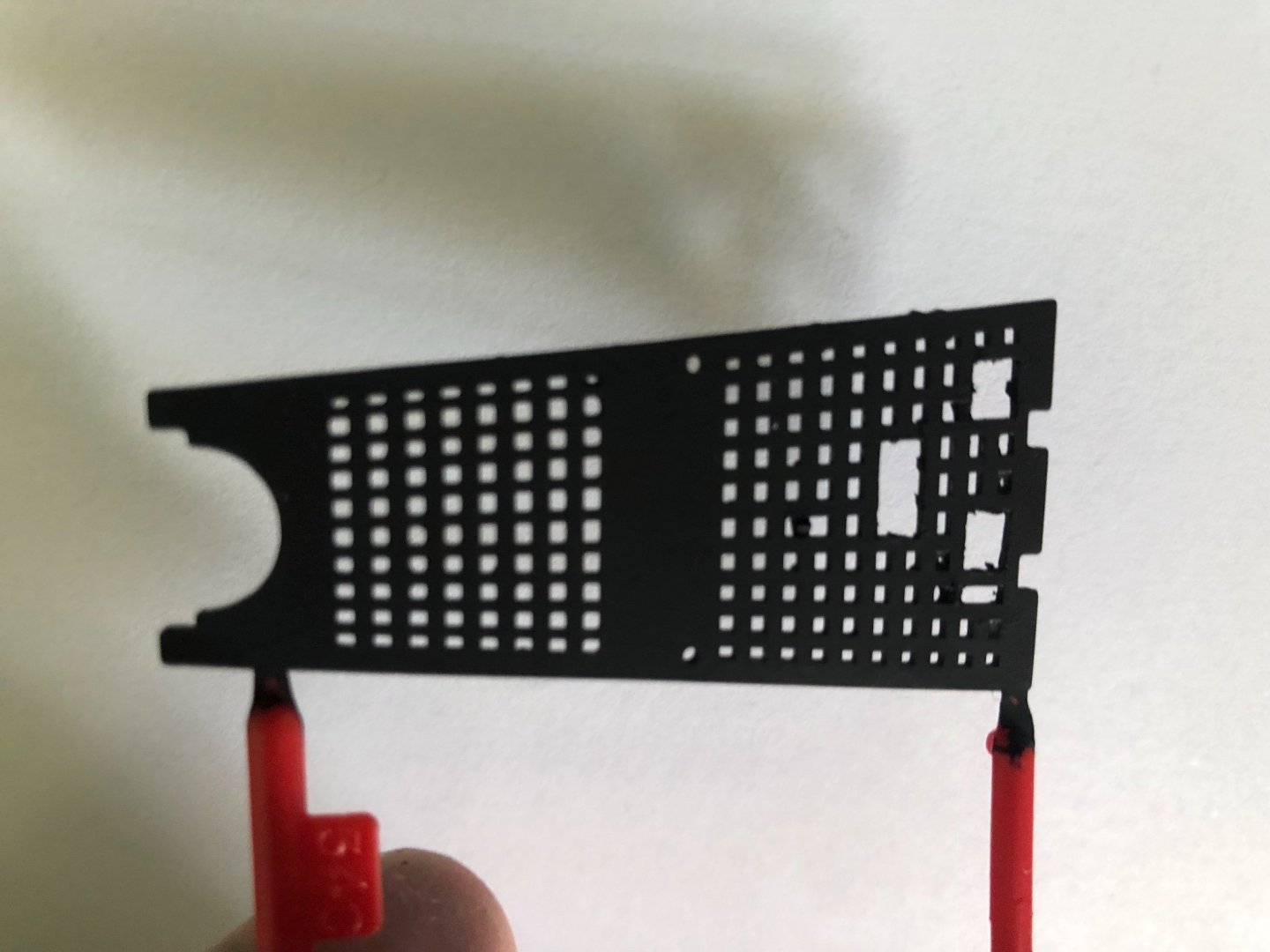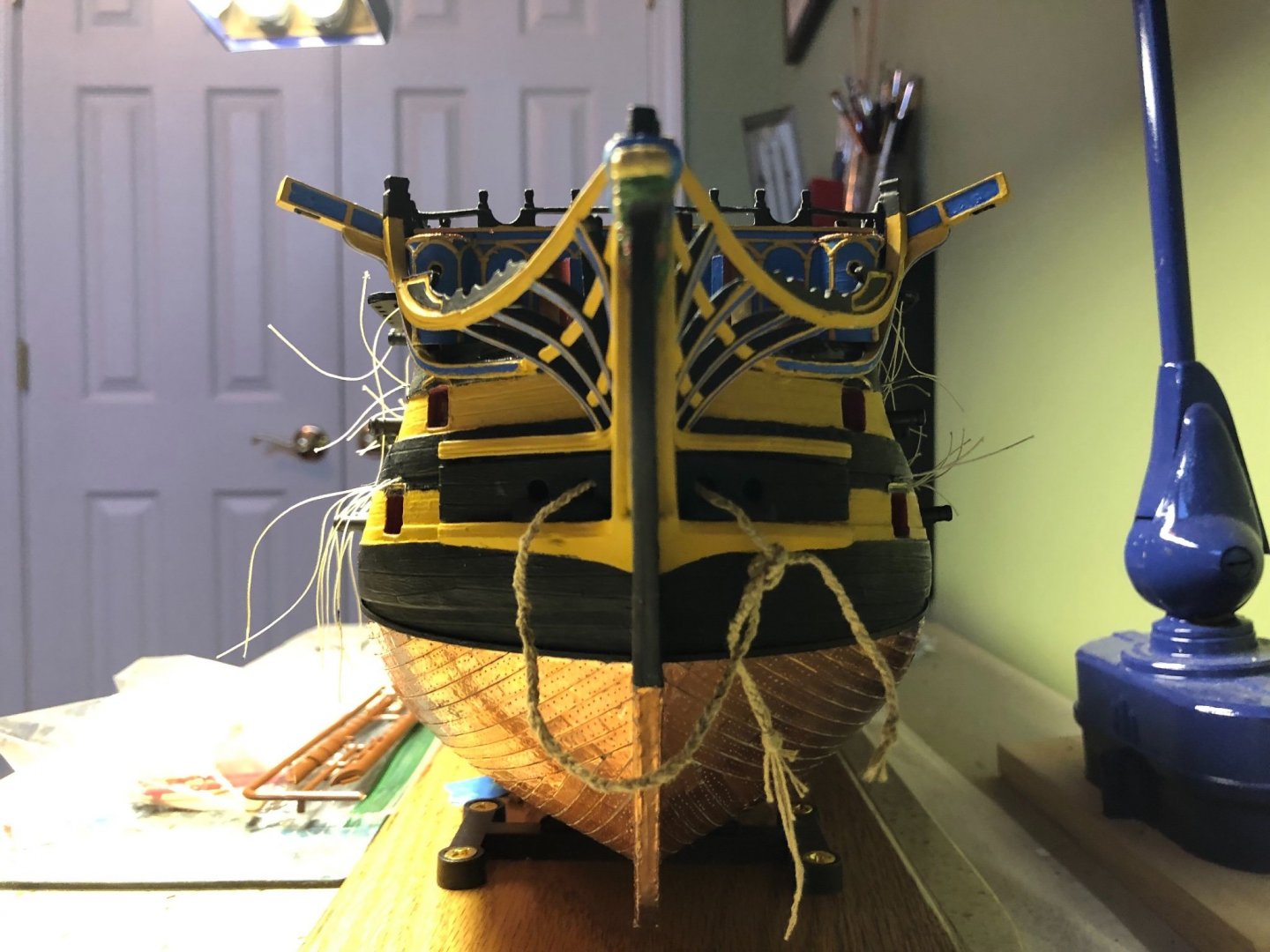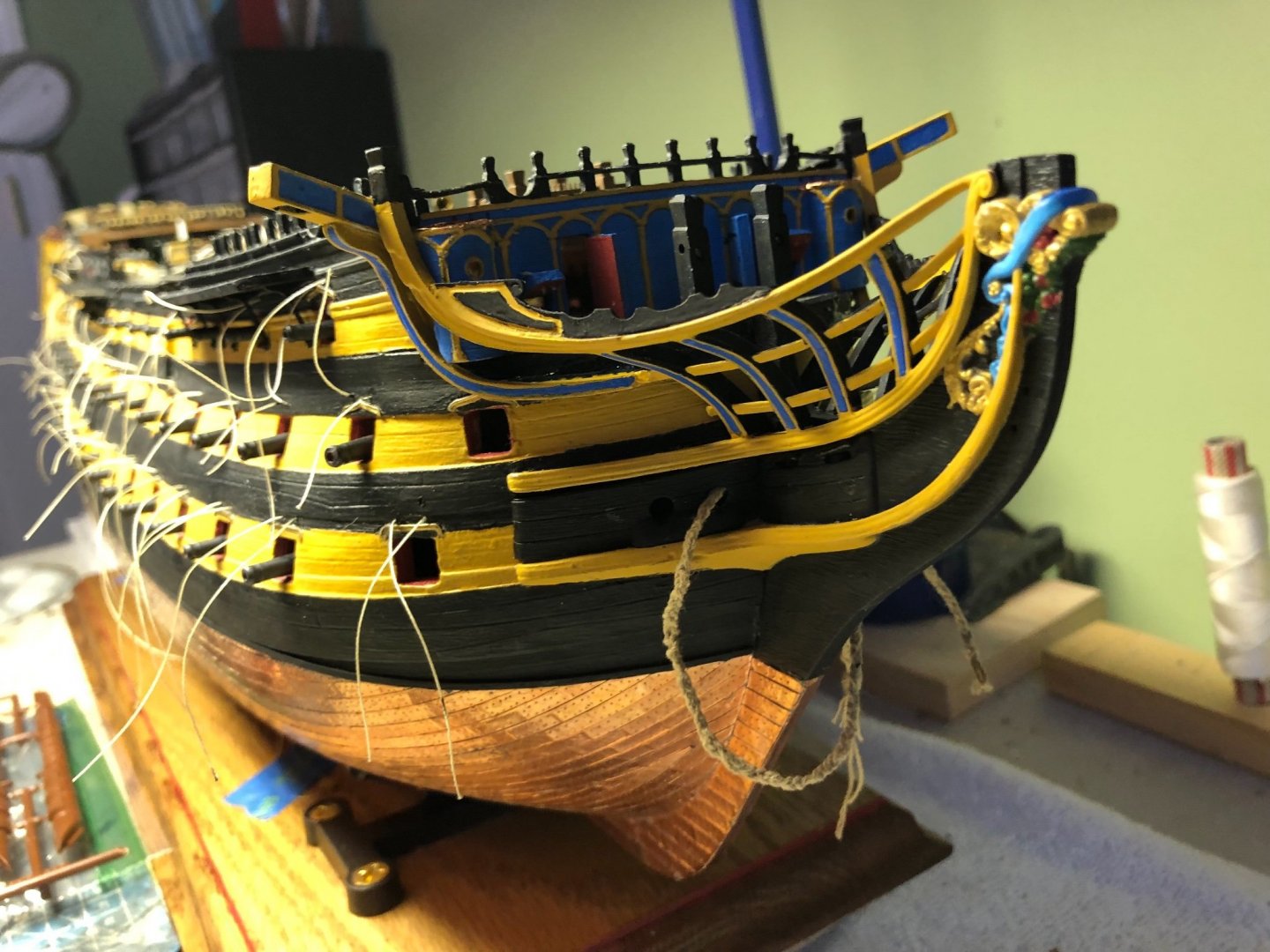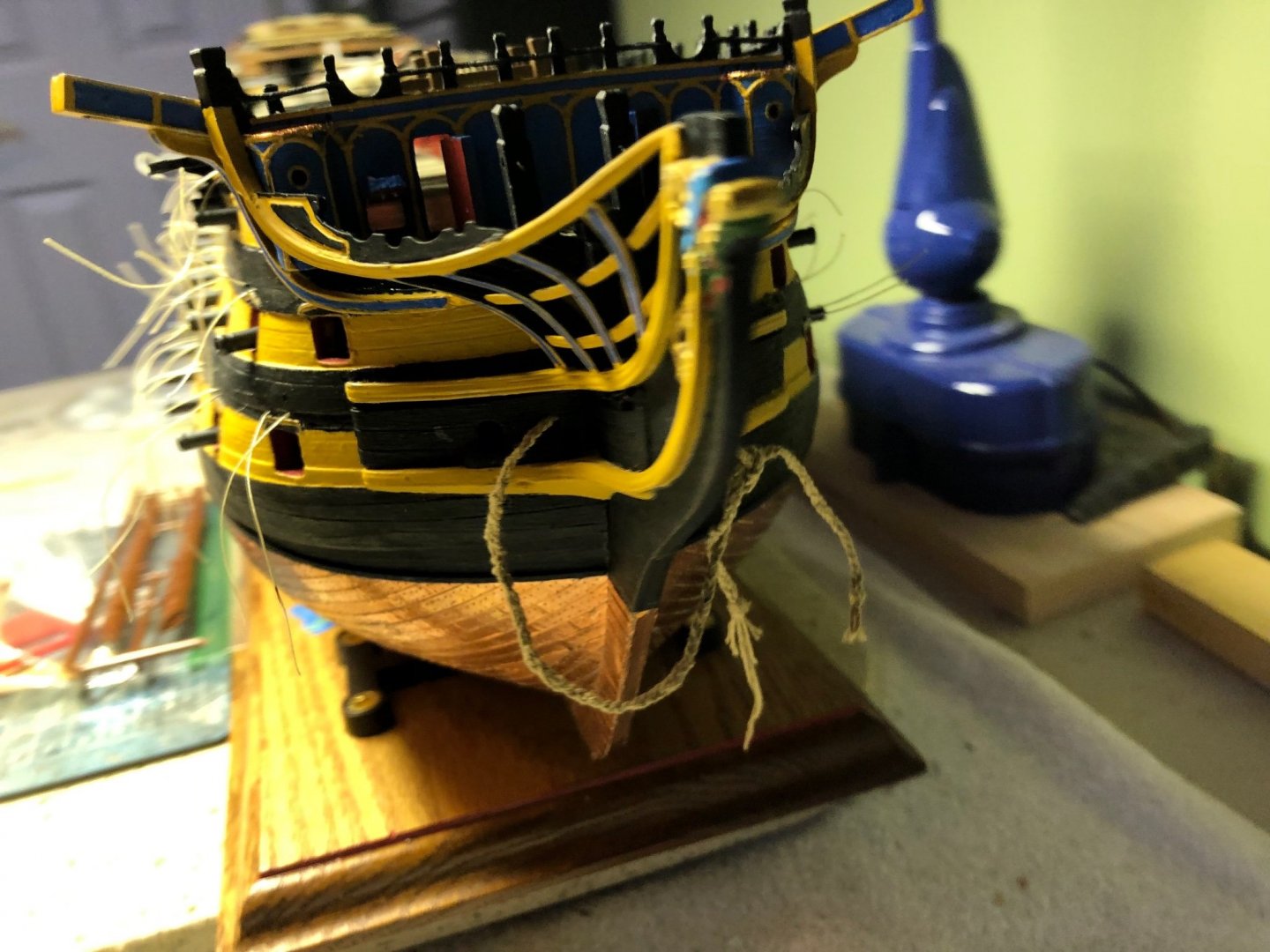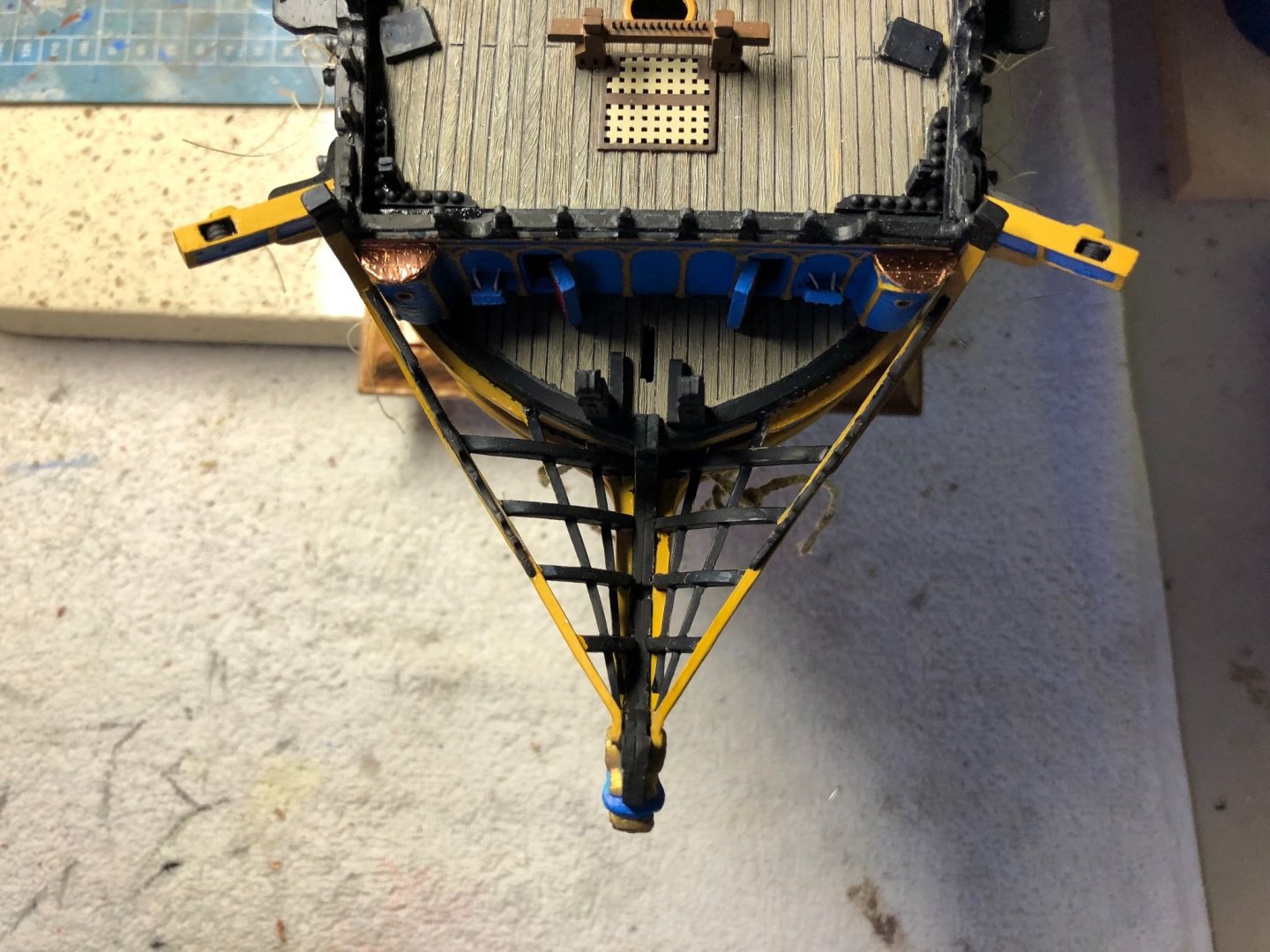
Bill97
Members-
Posts
2,704 -
Joined
-
Last visited
Content Type
Profiles
Forums
Gallery
Events
Everything posted by Bill97
-
I was thinking earlier today that there are several of us that communicate and comment frequently on this build blog. As an old school kind of guy I like to put a face with a name. Fun to see how the face compares to what I imagine. I saw Daniel’s picture on his blog. I am attaching mine. If any of you other guys would want to post a photo it would be great.
-
I believe you are right Ian. That is going to save me a big step! Thanks. I thought I read somewhere back in these blogs that you experienced builders recommended it. Looking at the size of the eye bolts in the photo I think my home made ones are proportionally bigger. Much smaller and I would have struggled to get the thread size I put in place several months ago for rigging the hatch doors through the eye!
-
Got about half done with CA glue so I guess I will live with them 😊 Still need to add the evergreen to the back.
-
Thanks Ian. To make my eye bolts I take thin wire (30g in this case) and wrap it around a small diameter nail and then twist the ends into a tight spiral. Trim off the excess and glue with a dot if CA. I am leaving all the metal parts I add to the ship I blackened.
-
So I almost messed up! I am working on the cannon hatch doors. Making them thicker with Evergreen and making a zillion eye tiny eye bolts for the bottoms that the ropes will tie to. I was getting ready to paint them with the idea that the outside of each cover is painted the color of the corresponding stripe on the hull where that door is. Thinking that when the cover was closed there would be an uninterrupted stripe of ochre yellow, or part black part yellow. Looking at a number of blog pictures and online pictures of the actual ship it appears I am wrong in my thinking and that all exteriors are black regardless where they are located on the hull. Is that correct? They are all black on the outside and red on the inside?
-
No Ian don’t give it up. You are to good at it! Slow pace is not a bad thing. As a retired guy with kids married and out of the house I have the luxury of working on my ship whenever I want, as long as the wife does not need me to do something else. 😊
-
Oh not at all Ian! I appreciate you pointing that out to me. Kind of a dah moment on my part that I did not notice or question that. Obviously could not fire the cannonade with the netting there. Is this better?
-
See if I can uncross my eyes now! 😵💫 Got all the hammock cranes installed, then the netting, and finally the plastic rolled hammocks that Heller supplied. Also used a few of the extra stanchions to make a rope banister for the stairs going up to the poop deck.
-
Well friends today is my official 5 month anniversary building my Heller HMS Victory. Have come a long way since June 15 when I opened the box. Thanks so much to everyone one who has shared advice, instructions, and very nice compliments. Special thanks to Daniel of course for your beautiful etched parts, and to Kevin, Marc and Ian. You four have provided me incredible help. I am spending time these last few days installing Daniel’s hammock cranes and running the threads that will eventually support the fabric that goes inside and then the painted hammocks. After that is completed I plan to do the cannon hatch doors. Following the hatch doors will be the masts and bowsprit.
-
Oh yeah Ian. I know I just have not done that yet. It is still on all of them. Waiting till I am ready to put the hammocks in. Not sure why. Thought it might protect them a bit more.
-
Installed the hammock cranes down the port side and the two interior places. As you may remember I have decided to leave all Daniel’s etched brass pieces shiny brass and not blacken them. Also followed Daniel’s lead and added a piece of Evergreen under the forecastle hammock cranes. Also dry fitted the foremast and attached a thread to the channel and around the top of the mast to simulate the future shrouds. Wanted to make sure I widened the fore channel enough that the shrouds will not interfere with the forecastle hammock cranes. All is well and with the addition of the deadeye height I think the shrouds will be just fine.
-
Kevin just the fact that you are brilliant enough to even figure these calculations is impressive! Seriously doubt you will experience any issue putting dowels in your masts! 😀 I am going to show my complete lack of 3D printing knowledge with this question. Would it be possible to print a solid mast? Maybe two solid halves that you would glue together? Just curious.
-
Thanks OC for your nice compliment. Yes it is definitely my plan to strengthen the spars as well.
-
Kevin these are the 3 dowel sizes. The larger one that I used for the mainmast and foremast is 1/4”.
-
Kevin I had to shape them a bit as I got closer to the top. I took the three masts to my local hobby shop and selected dowels that most closely fit. Then I cut them to length and sanded a little where necessary to get them to fit snugly. Then ran a bead of CA glue and clamped them up. Not difficult at all.
-
Daniel, or any of you guys that have used Daniel’s hammock cranes, I have a question. Today I have been working with the different etched hammock cranes. Making sure I knew which cranes went each place. I noticed in the photo from plate #4 instructions for the forecastle cranes that there appears to be an added piece of plastic under he cranes. This is not something I find in the Heller parts. Is this maybe a piece made from Evergreen and attached along the edge?
-
Wanted to enhance the strength of the bowsprit by putting a wood dial rod inside before gluing it together. I decided since I was working on it I would go ahead and do the same with the bottom section of the 3 masts. That worked out well so after dry fitting them on the ship off to my makeshift spray box they went for a coat of primer.
-
Ok my friends a sequence question. The Heller instructions have me moving into building the masts soon after I complete the bow and the bowsprit (with a little rigging). Looking ahead in the instructions I do not get to the cannon hatch doors to a good bit further along. I am thinking about going ahead and doing that before starting the masts. Would kind of like to pretty much finish the basic ship structure before moving vertical with the mast. Going to thicken them with some Evergreen, paint them red on the inside and in keeping with the hull colors on the outside. Also going to add eyebolts for the lines I already have in place to tie to. This will be a slow time consuming effort. Wonder if any of you have experienced a reason to postpone installing the hatch covers at this point other than the obvious risk of knocking them loose during future rigging?
-
Thanks Daniel. That is fantastic help! I was just now studying Longridge’s book for help with that. So the one on the left (black) is the correct hole placement? Getting some nice work done on the bow. Will be adding your resin figure head later.
-
Good morning Daniel. If I am understanding you correctly, you say there is a picture on your build log that shows the mariners walk and where the rigging holes should be? Also, what is the Most Honorable Order of the Garter? Have not heard of this beforehand?
About us
Modelshipworld - Advancing Ship Modeling through Research
SSL Secured
Your security is important for us so this Website is SSL-Secured
NRG Mailing Address
Nautical Research Guild
237 South Lincoln Street
Westmont IL, 60559-1917
Model Ship World ® and the MSW logo are Registered Trademarks, and belong to the Nautical Research Guild (United States Patent and Trademark Office: No. 6,929,264 & No. 6,929,274, registered Dec. 20, 2022)
Helpful Links
About the NRG
If you enjoy building ship models that are historically accurate as well as beautiful, then The Nautical Research Guild (NRG) is just right for you.
The Guild is a non-profit educational organization whose mission is to “Advance Ship Modeling Through Research”. We provide support to our members in their efforts to raise the quality of their model ships.
The Nautical Research Guild has published our world-renowned quarterly magazine, The Nautical Research Journal, since 1955. The pages of the Journal are full of articles by accomplished ship modelers who show you how they create those exquisite details on their models, and by maritime historians who show you the correct details to build. The Journal is available in both print and digital editions. Go to the NRG web site (www.thenrg.org) to download a complimentary digital copy of the Journal. The NRG also publishes plan sets, books and compilations of back issues of the Journal and the former Ships in Scale and Model Ship Builder magazines.

